Greek Sphinx figure is riveting. Whenever I see its beautiful wings and lion’s paws, it puzzles and inspires me to create. The sphinxes look mystical, enigmatic and surreal. When I went to Greece I revived my interest in this art symbol. I’ve found that the Greek sphinxes are different from the Egyptian ones. Moreover, the Greek art has some near east influences as a similar bird-the griffin- shows up in the archeology of Greece. Let’s discover their history together to understand how ancient cultures developed, mixed and created art with various meaning and symbolism.
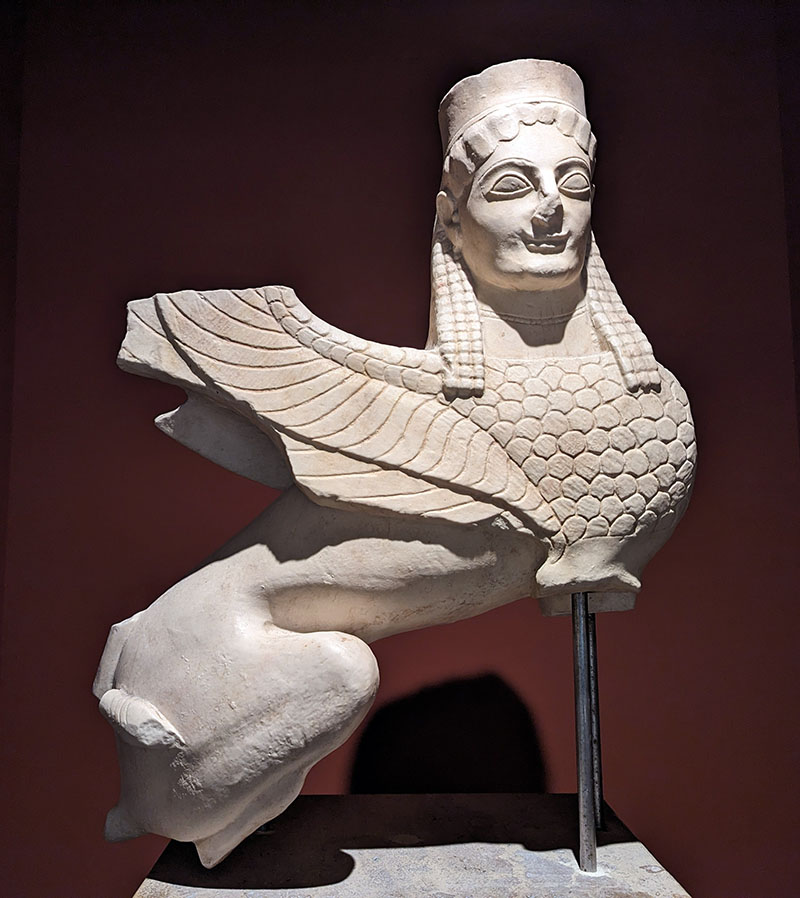
The enigmatic world of Greek sphinx: its history & artistic influences
Both griffins and sphinxes are mythical creatures that show up in the archeological museums in Greece. The Greek sphinx figure shape seems to be a combination of the Near East griffin and the Egyptian sphynx visually.
1. The Griffins of Greece
The griffin originated in the Near East and got adopted by the Greeks in art. Griffins are frequently shown as protectors or guardians. They might be flanking entrances or royal figures.
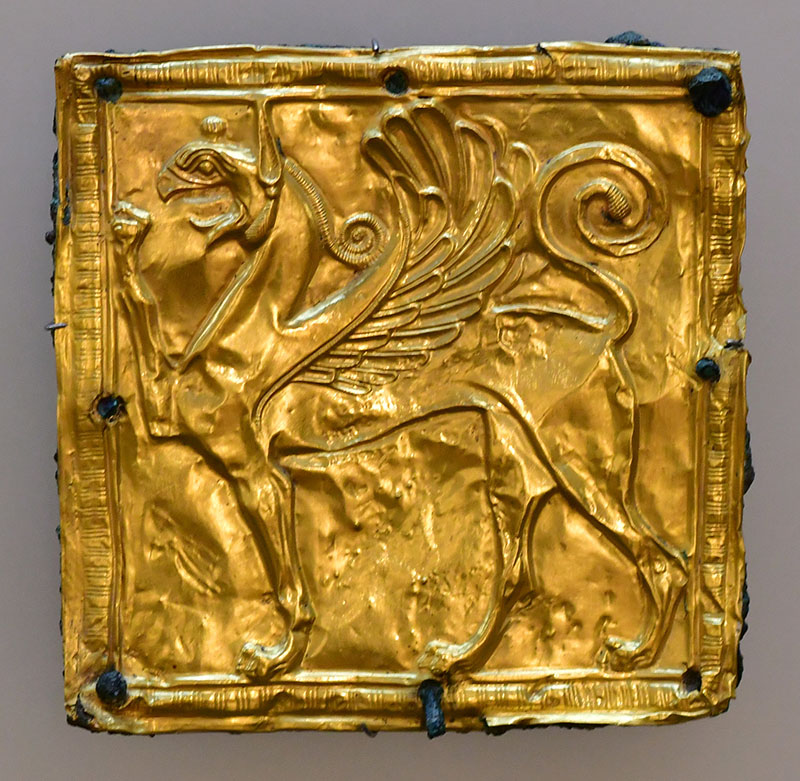
SHAPE: The griffin has the body of a lion (sometimes winged) and the head and wings of an eagle. The griffins have a powerful stance and curled tongues.
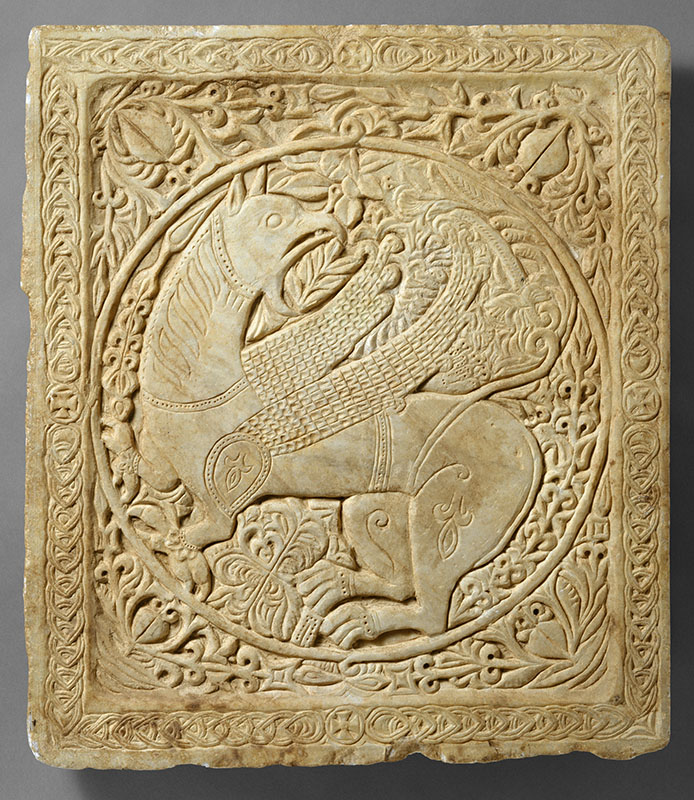
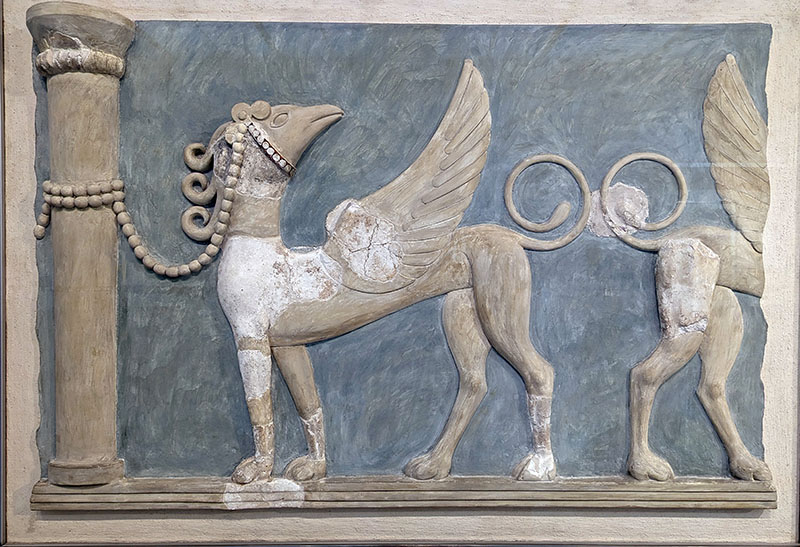
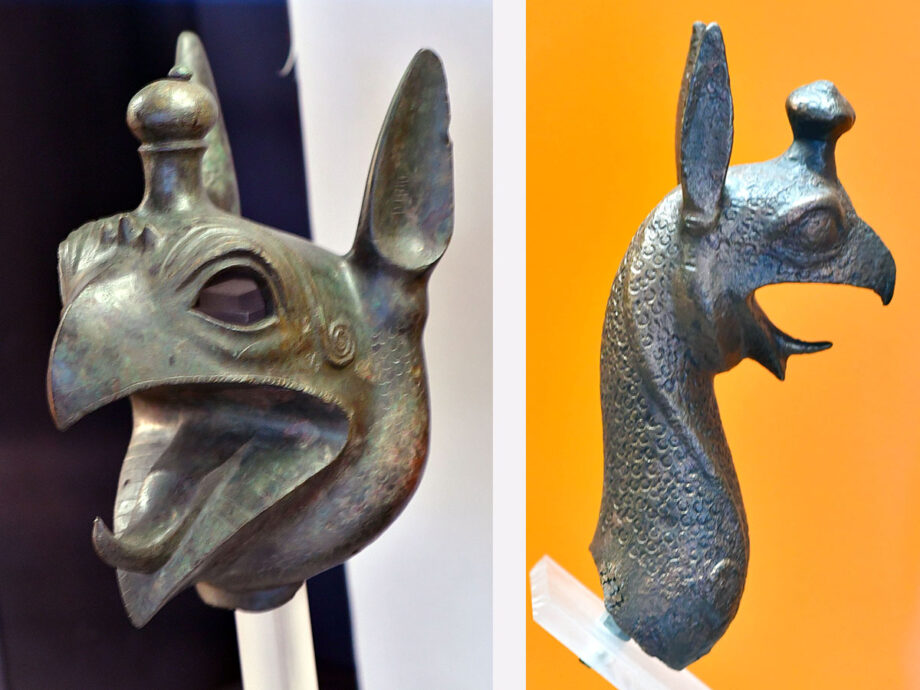
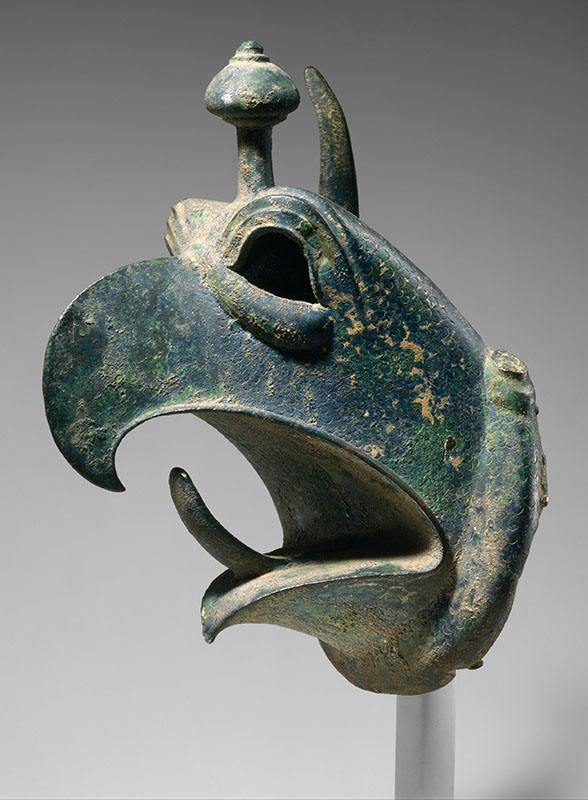
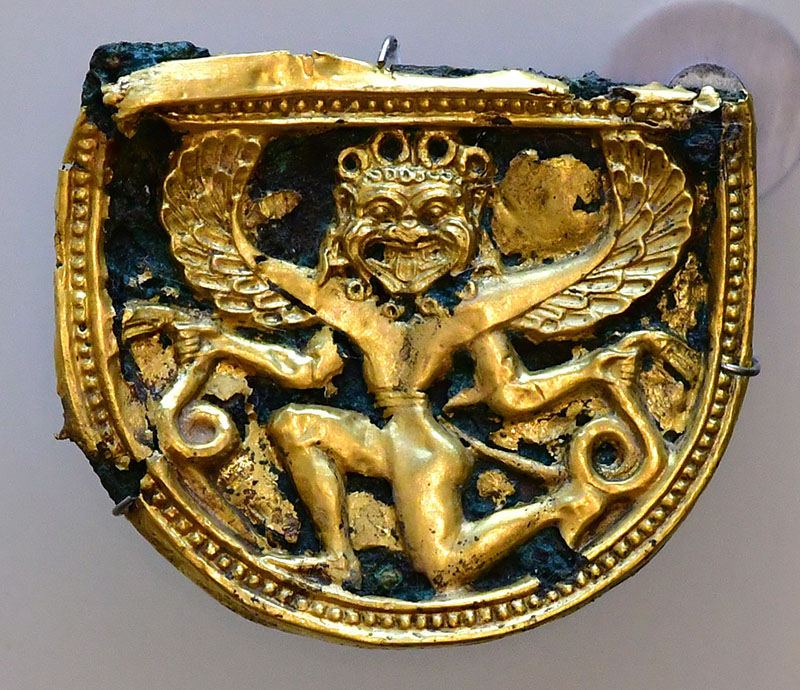
Mythological creatures like gorgons and sphinxes often functioned as apotropaic images (had the power to avert evil or bad luck) that protected the grave.
2. The Egyptian Sphinxes
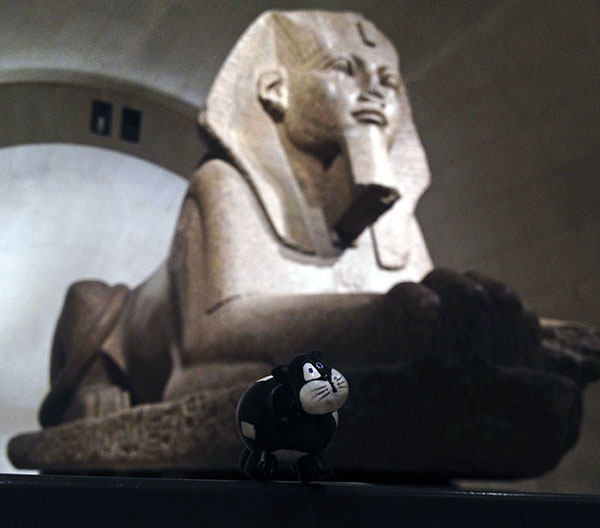
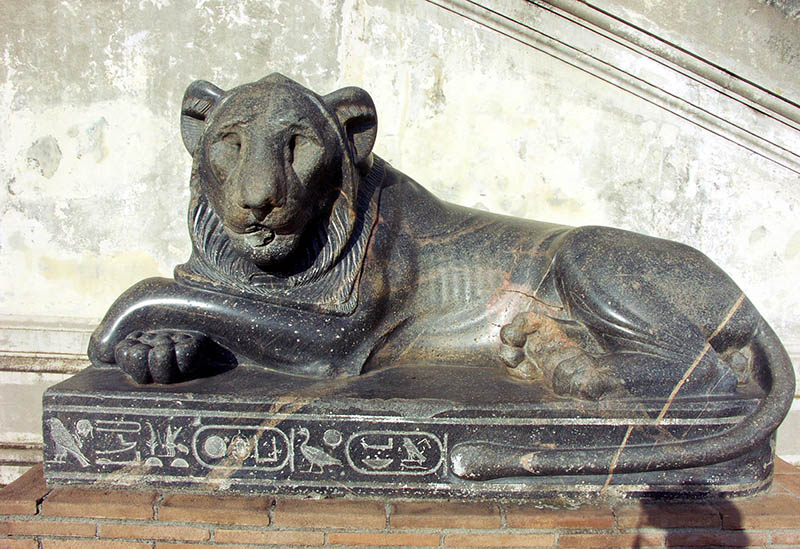
SHAPE: The Egyptian sphinx is a creature with a lion’s body and a human (male) head. The Egyptian sphinx typically possesses a pharaoh’s face, blurring the lines between the human and the divine to symbolize the enduring power of the ruler. Egyptian sphinxes had no bird features and were associated with protection and power.
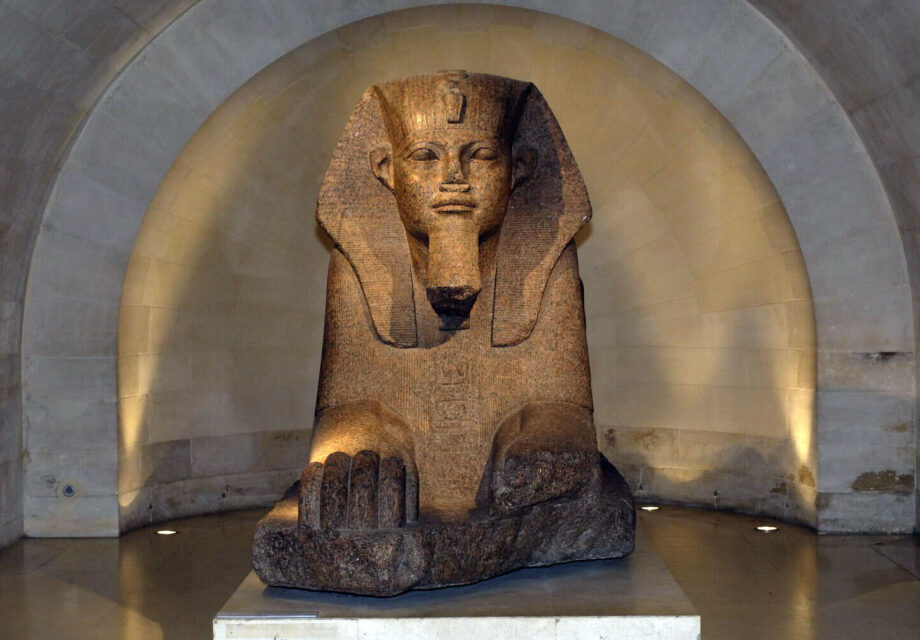
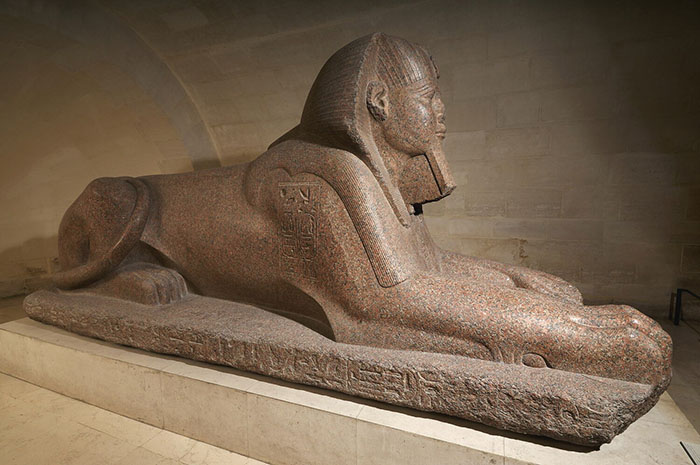
These figures served as guardians of the dead, often flanking tombs or standing watch at temples. Over time, the sphinx evolved as a concept, with variations featuring the head of a ram or a falcon depending on the specific deity being honored. Egyptian sphinxes were primarily crafted from limestone but granite was also used to carve detailed figures.
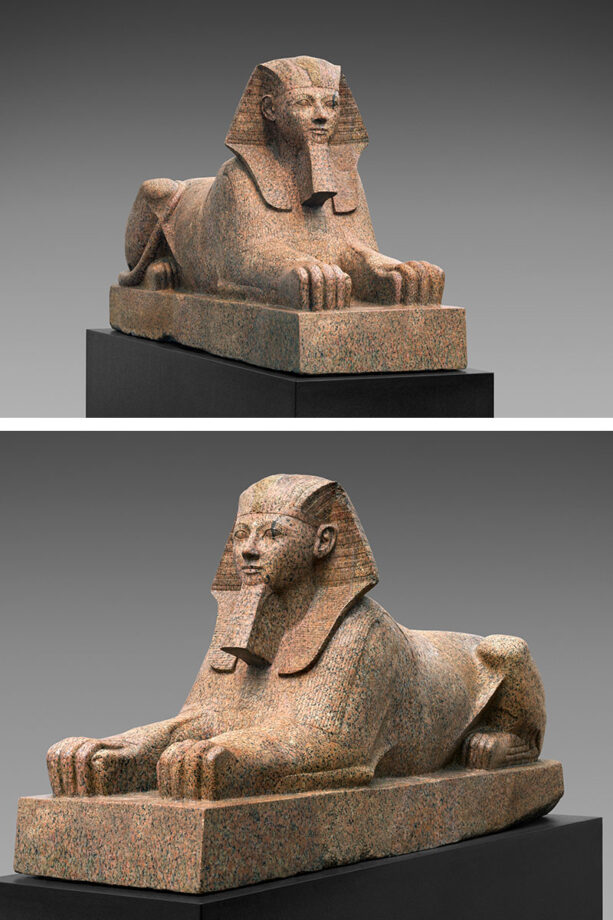
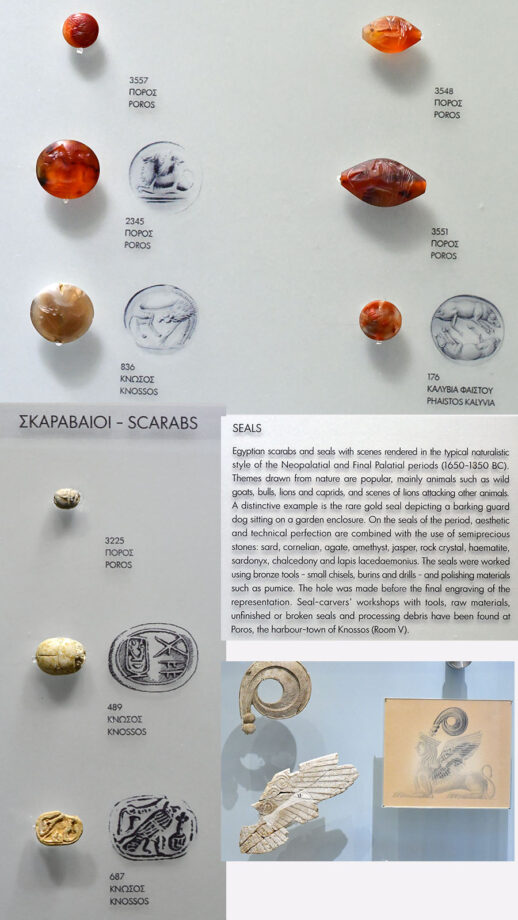
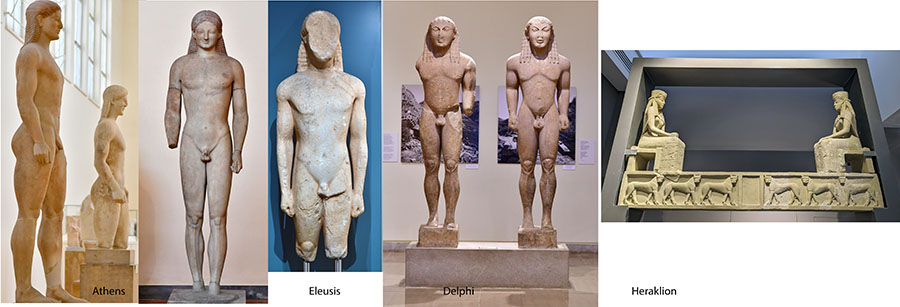
3. The Assyrian Sphinxes
These are the examples of the Assyrian sphinxes I found on the website of the Metropolitan Museum of Art. Although they have the sphinx shape, their heads can vary.
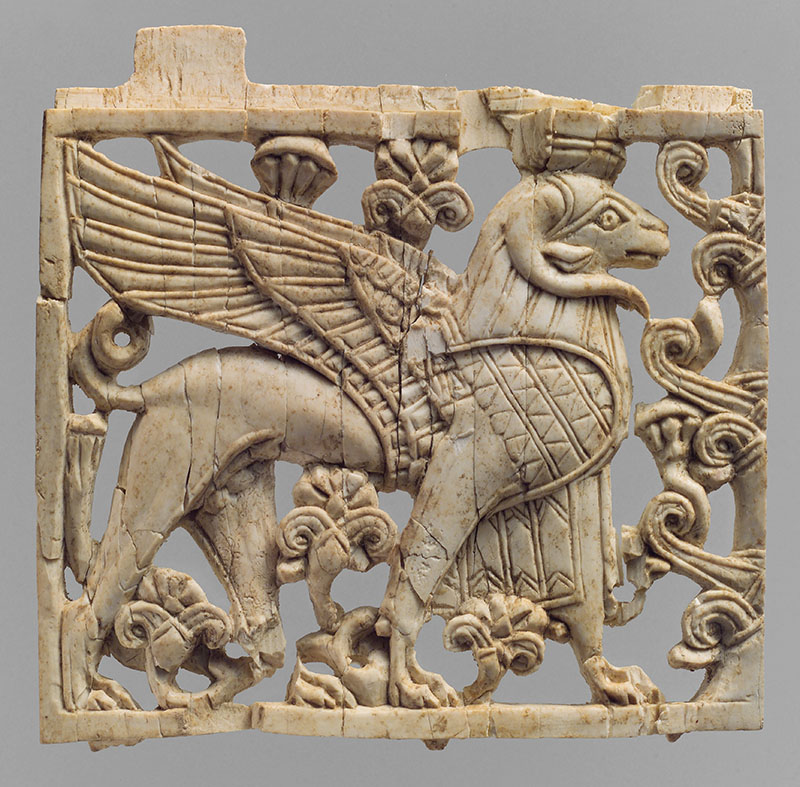
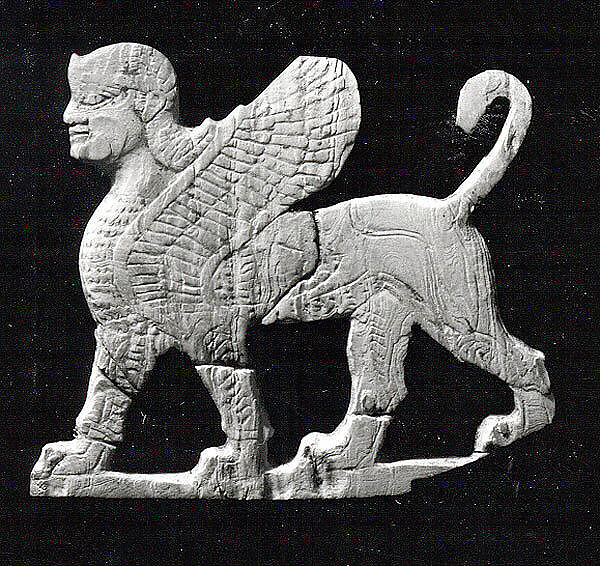
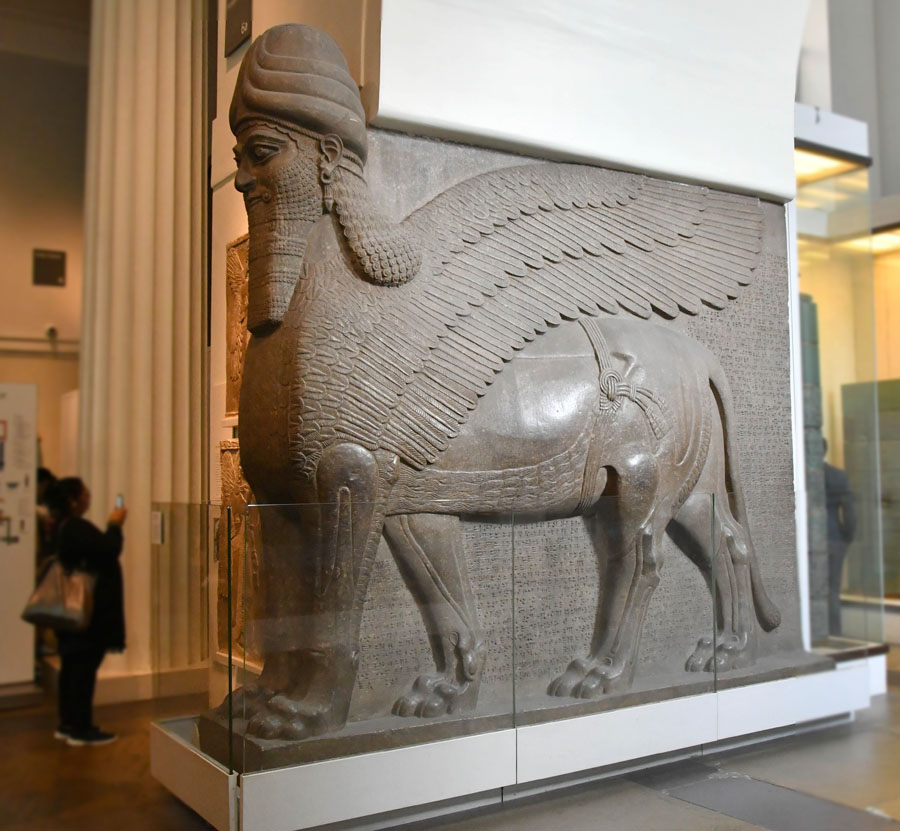
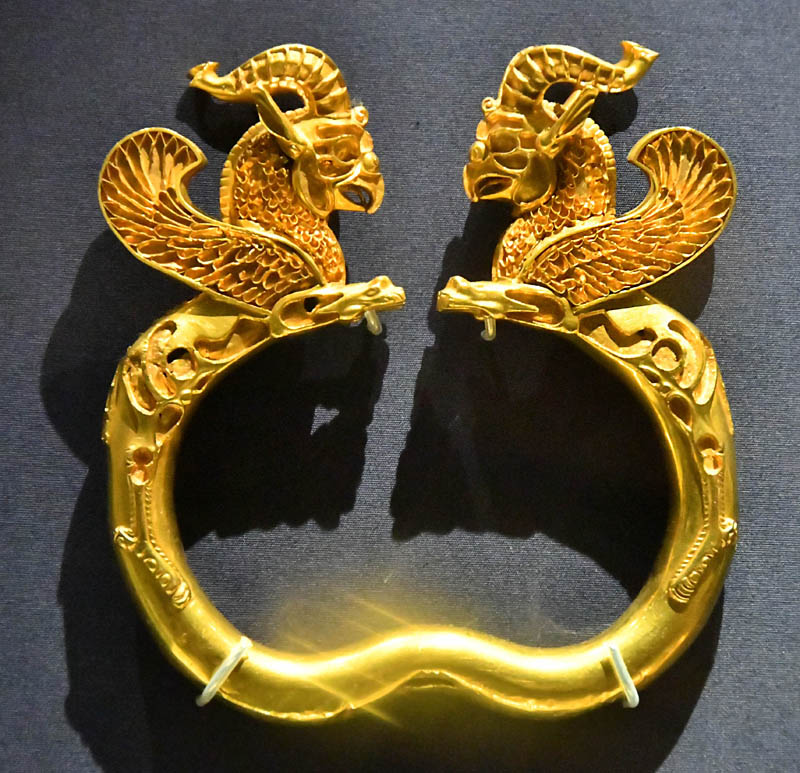

| The Colored Pencil Manual | How to Color Like an Artist |

The Greek Sphinx emerges: history & symbolism
SHAPE: The sphinx was a mythical being with the body of a lion, the wings of an eagle, and the head of a woman. Some could have a long tail. Sphinxes are depicted in a seated position, often with a strange smile and facial features resembling ancient near eastern art.
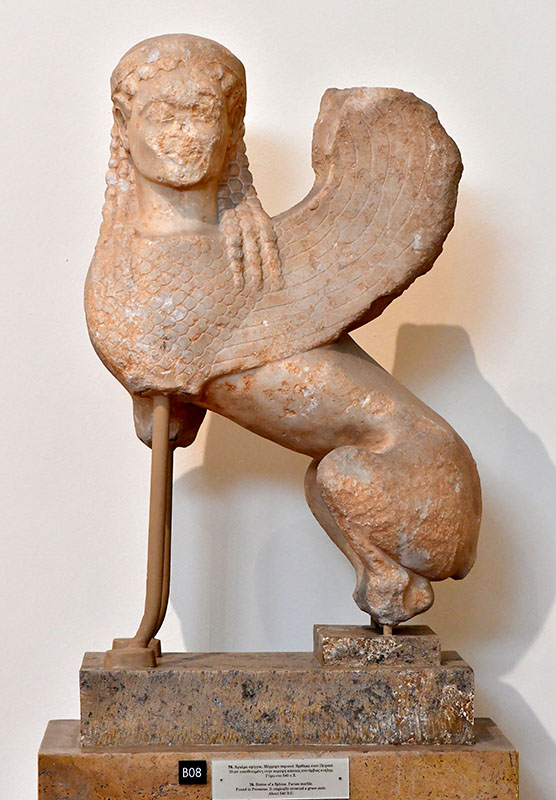
The Greeks adapted the sphinx concept (guardians of the dead) from Egypt through trade and cultural contacts. Greek sphinxes appeared before the 12th century BCE. After a hiatus of about 400 years, the sphinx reappeared in Greek art around the 8th century BCE. It appeared on coins, pottery, and funerary monuments as grave stelai.
Grave Stele
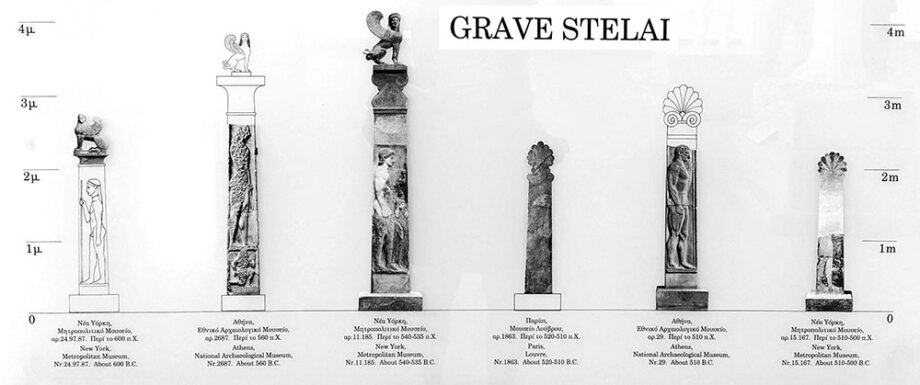
Funerary monuments appeared on the graves of important people starting from the Mycenaean period. Such example is the discovery of the stelai in the Grave Circle A at Mycenae, Greece. There is little information available on the early Geometric period in Greece based on today’s research. There’s more archeological information available dating from the late Geometric period. The excavations in Attica region (Athens) revealed the findings of large vases, amphoras and crates that depicted the mourning scenes and other epiphora of the dead that functioned as the funerary monuments. Grave marks were small, plain stones during that time period.
From the end of the 7th century B.C. the tombs got marked with a monumental stele, which was either incised, painted or done in relief. The early grave markers were tall and narrow. One side of it represented the deceased. They were crowned by a finial in the shape of a concave molding, influenced by the Egyptian art. In the first quarter of the 6th century BC, the finial was low. Later, it became taller and more elaborate with incised or relief decorations with leaves, rosettes, guilloche, lotuses and rare human figures. The finial toped the demonic figure of a sphinx, the guardian of a tomb.
Around 550 BC, the form of the finial becomes even more elaborate with double volutes that assume the shape of an inverted lyre. The Sphinx remains the principal element of the crowning. This stele type dominates Greece until about 525BC.
Around 530 B.C, the overall form of the stele changes again. It becomes lower and narrower, and the Sphinx usually placed on the finial gets replaced by two single or double volutes with the Anthemion (design consisting of a number of radiating petals), influenced by the Ionian and Egyptian art. Many of these grave markers had a painted decoration representing the deceased and various animals like horses, roosters, dogs, etc. The name of the dead appeared written in the possessive case at the bottom of the stele or on its base.
The largest and most important group of the Archaic funerary steles comes from Attica with representations of athletes and warriors. It’s rare to find other figures depicted on steles. Besides Attica, other places manufactured the grave markers in Greece. The grave steles were smaller found in the Aegean islands and Ionia. In the 6th century, they were also crowned with the anthemion and showed various figures, such as the youth, young women, children or elderly men.
The islands, lonia and other areas of Greece produced grave steles without interruption. In Attica, however, the production of funerary stones ceases around 6th century BC. Possibly after a prohibition by Kleisthenes aiming at curtailing the use of luxurious memorials. The reintroduction of the funerary monuments in Athens takes place during the Peloponnesian War around 430-420 BC.
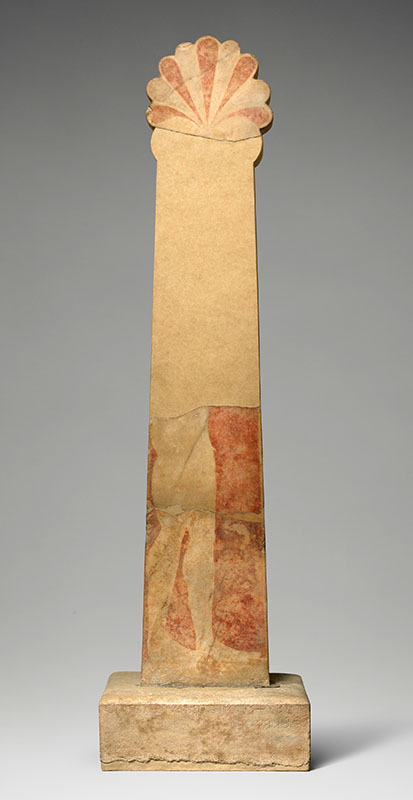
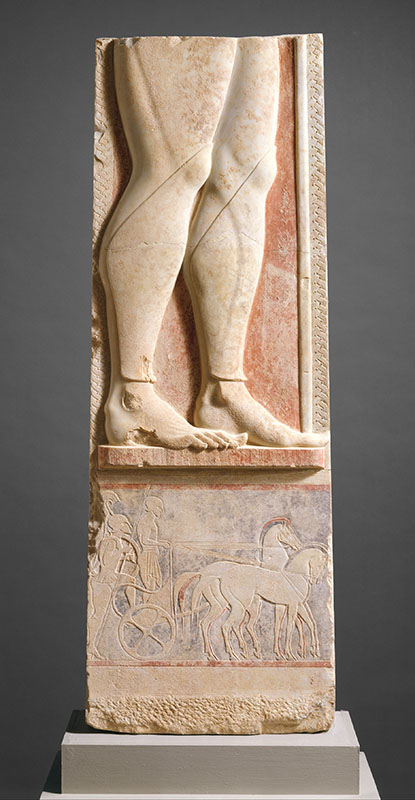
The Anthemion shape
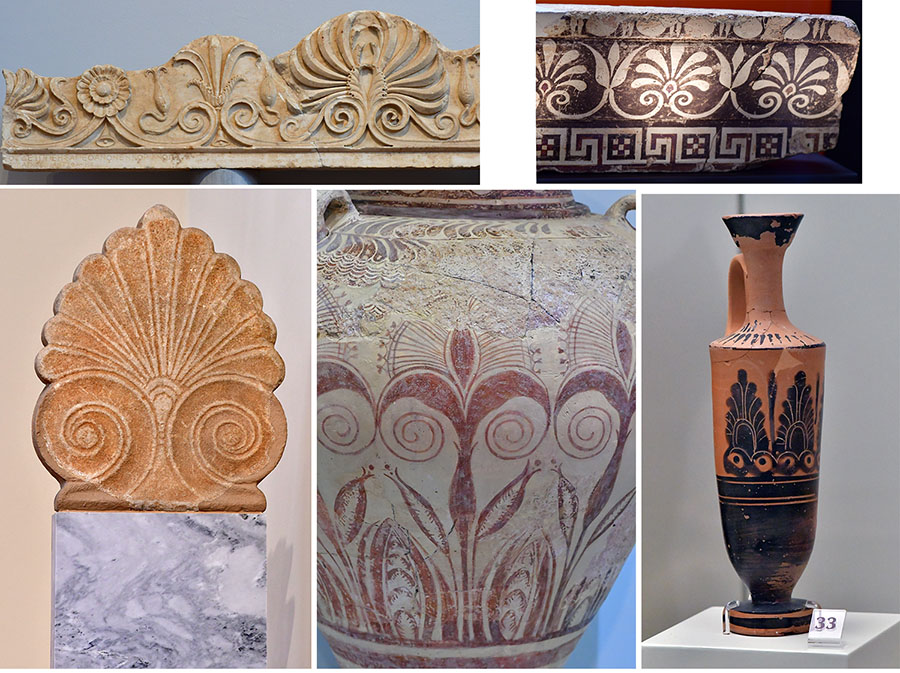
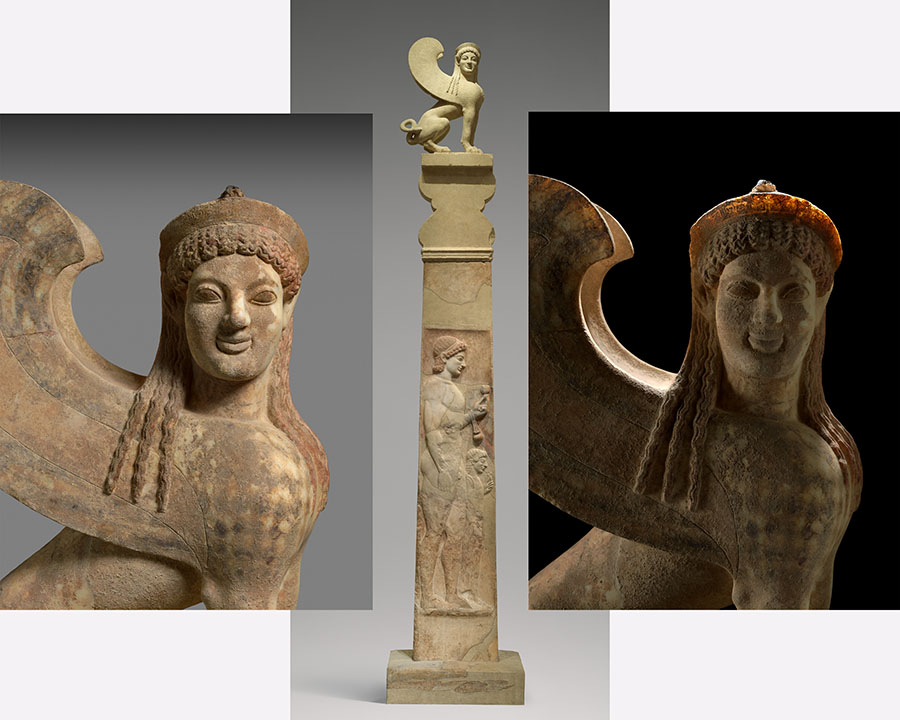
“The youth on the shaft is shown as an athlete, with an aryballos (oil flask) suspended from his wrist. Athletics were an important part of every boy’s education, and oil was used as a cleanser after exercise. He holds a pomegranate—a fruit associated with both fecundity and death in Greek myths—perhaps indicating that he had reached puberty before his death. The little girl, presumably a younger sister, holds a flower. The sphinx crowned a funerary stele as a symbolic protector for the deceased Megakles from the powerful clan of the Alkmeonidai.” The monument stood in Attica (the region around Athens) where people could see it from a great distance. http://www.metmuseum.org/art/collection/search/248500
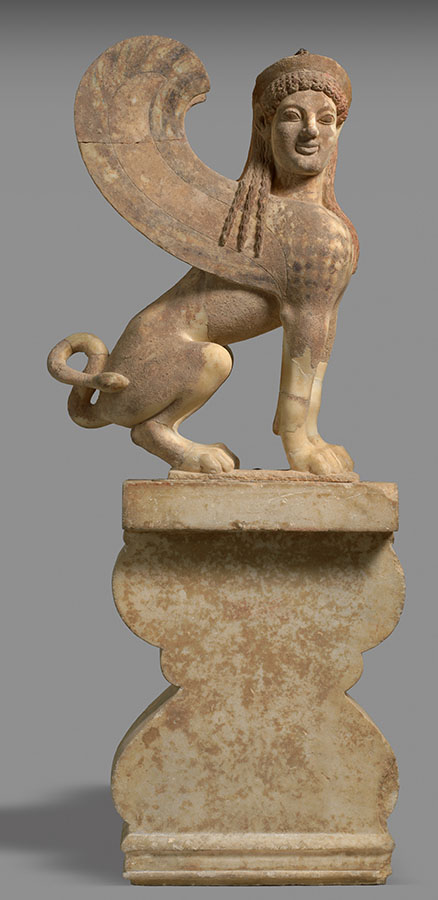
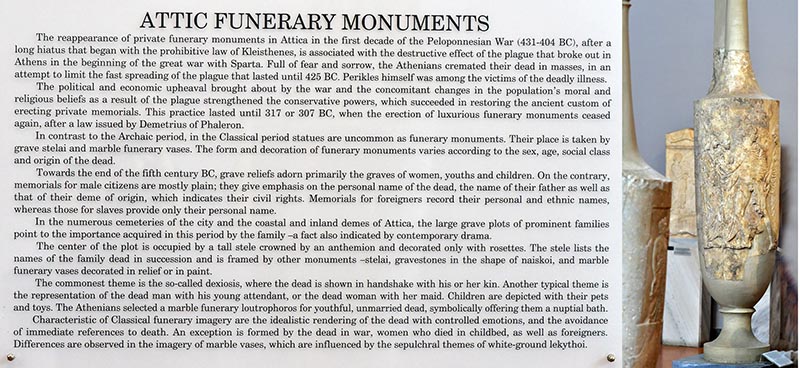
The reappearance of private funerary monuments in Attica in the first decade of the Peloponnesian War (431-404 BC), after a long hiatus that began with the prohibitive law of Kleisthenes, is associated with the destructive effect of the plague that broke out in Athens in the beginning of the great war with Sparta. Full of fear and sorrow, the Athenians cremated their dead in masses, in an attempt to limit the fast spreading of the plague that lasted until 425 BC. Perikles himself was among the victims of the deadly illness. The political and economic upheaval brought about by the war and the concomitant changes in the population’s moral and religious beliefs as a result of the plague strengthened the conservative powers, which succeeded in restoring the ancient custom of erecting private memorials. This practice lasted until 317 or 307 BC, when the erection of luxurious funerary monuments ceased again, after a law issued by Demetrius of Phaleron.
In contrast to the Archaic period, in the Classical period statues are uncommon as funerary monuments. Their place is taken by grave stelai and marble funerary vases. The form and decoration of funerary monuments varies according to the sex, age, social class and origin of the dead. Towards the end of the fifth century BC, grave reliefs adorn primarily the graves of women, youths and children. On the contrary,
memorials for male citizens are mostly plain; they give emphasis on the personal name of the dead, the name of their father as well as that of their deme of origin, which indicates their civil rights. Memorials for foreigners record their personal and ethnic names, whereas those for slaves provide only their personal name. In the numerous cemeteries of the city and the coastal and inland demes of Attica, the large grave plots of prominent families point to the importance acquired in this period by the family a fact also indicated by contemporary drama.
The center of the plot is occupied by a tall stele crowned by an anthemion and decorated only with rosettes. The stele lists the names of the family dead in succession and is framed by other monuments -stelai, gravestones in the shape of naiskoi, and marble funerary vases decorated in relief or in paint.
The commonest theme is the so-called dexiosis, where the dead is shown in handshake with his or her kin. Another typical theme is the representation of the dead man with his young attendant, or the dead woman with her maid. Children are depicted with their pets and toys. The Athenians selected a marble funerary loutrophoros for youthful, unmarried dead, symbolically offering them a nuptial bath.
Characteristic of Classical funerary imagery are the idealistic rendering of the dead with controlled emotions, and the avoidance of immediate references to death. An exception is formed by the dead in war, women who died in childbirth, as well as foreigners. Differences are observed in the imagery of marble vases, which are influenced by the sepulchral themes of white-ground lekythoi.
The Naxian Sphinx
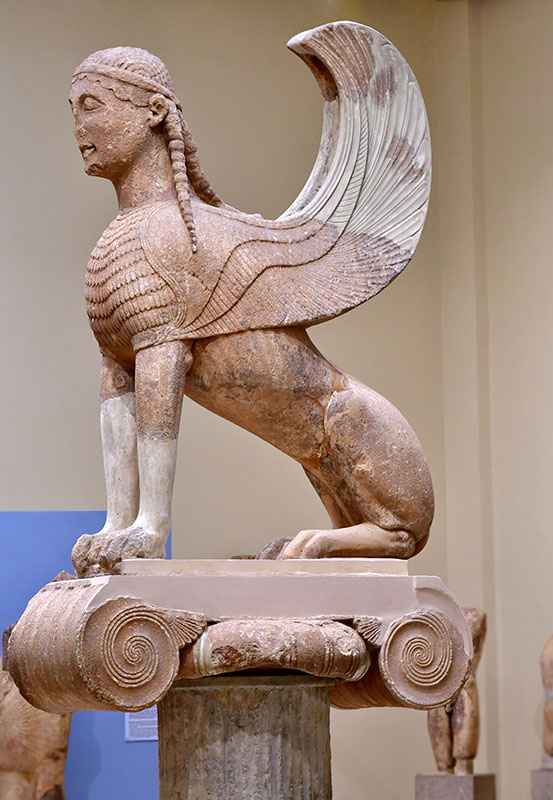
The colossal Naxian Sphinx stood on a 12-meter high ionic column in ancient Greece. Today the giant sphinx is on display at the Museum of Delphi. Mentioned in the myth of Oedipus, the Sphinxes were linked to the primitive cults. They were considered to be the guardians of tombs and sanctuaries placed as funerary monuments and votive offerings. A highly popular image in ancient Greece, the demonic Sphinx was a loan from the East to ancient Greek art. This colossal statue of the Sphinx of Delphi was offered by the Naxians in the 6th century BC.
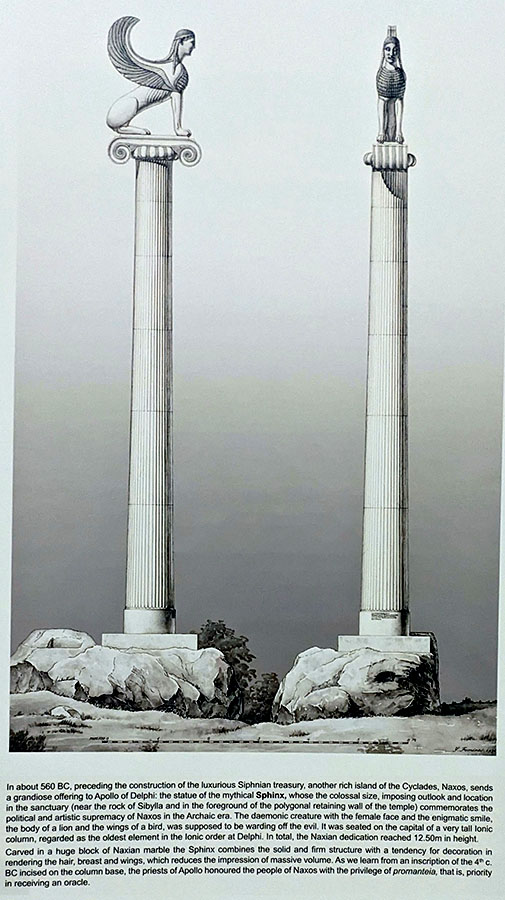
The Naxian Sphinx got created around 560 BC, preceding the construction of the Siphnian treasury –
a building at the Ancient Greek cult center of Delphi, in which the priests hosted the offerings from the city of Siphnos. The building stood on the “Sacred Way” road going through the Sanctuary of Apollo.
Naxos, a wealthy island of the Cyclades, sent a gigantic offering to the Sanctuary of Apollo of Delphi – the statue of the mythical Sphinx. Its colossal size, imposing appearance and location in the sanctuary (near the rock of Sibylla -the Sibyl rock-and in the foreground of the polygonal retaining wall of the temple) commemorated political and artistic supremacy of Naxos in the Archaic era. This demonic creature with the female face and enigmatic smile was supposed to be warding off the evil. Placed on the capital of a 12.50m tall ionic column, the sphinx became the oldest element in the ionic order in Delphi.
Carved from a huge Naxian marble block, the Sphinx shows solid structure with beautiful rendering of the hair, chest and wings, giving the impression of lightness. Dated to the 4th century BC, the incised inscription on the column’s base states that the priests of Apollo honored the people of Naxos with the privilege of promanteia, that is, priority in receiving an oracle.
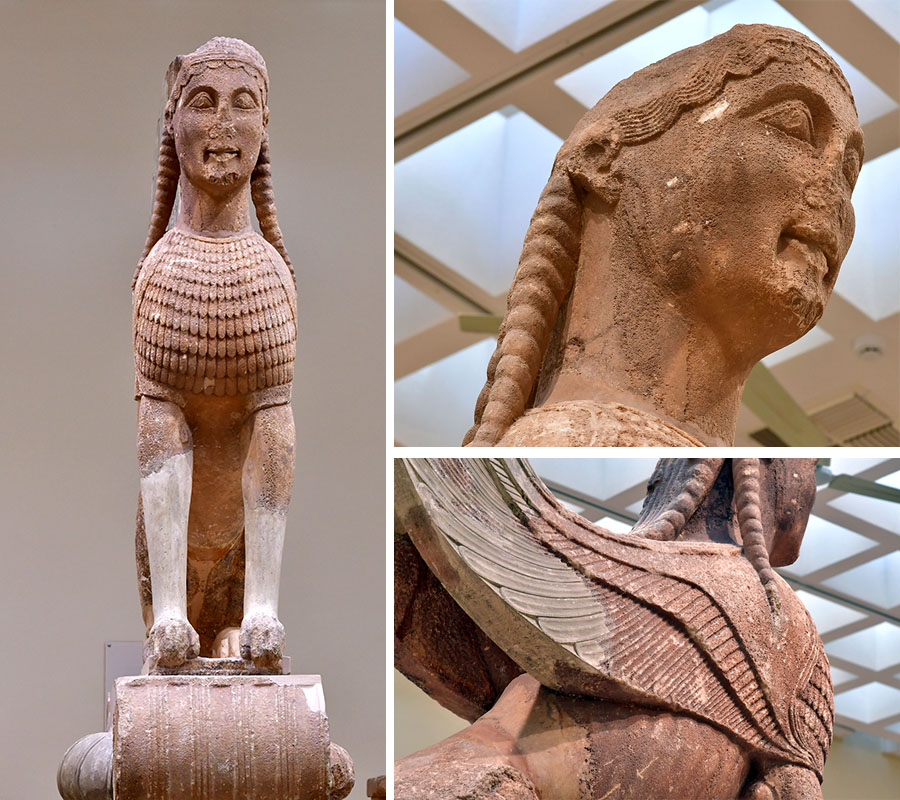
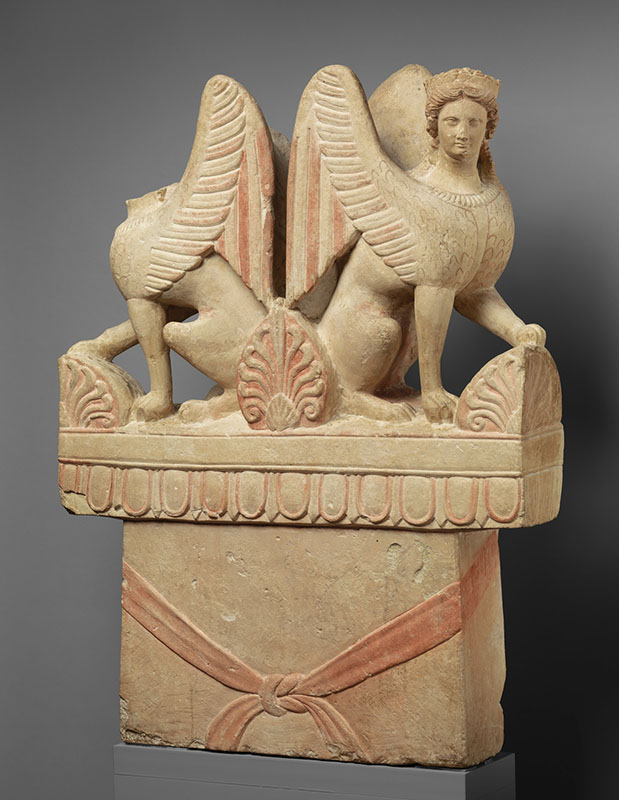
http://www.metmuseum.org/art/collection/search/242050
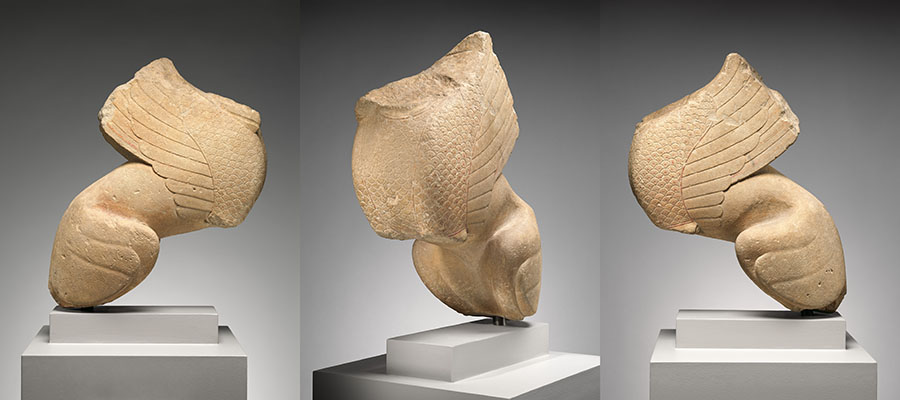
http://www.metmuseum.org/art/collection/search/254504
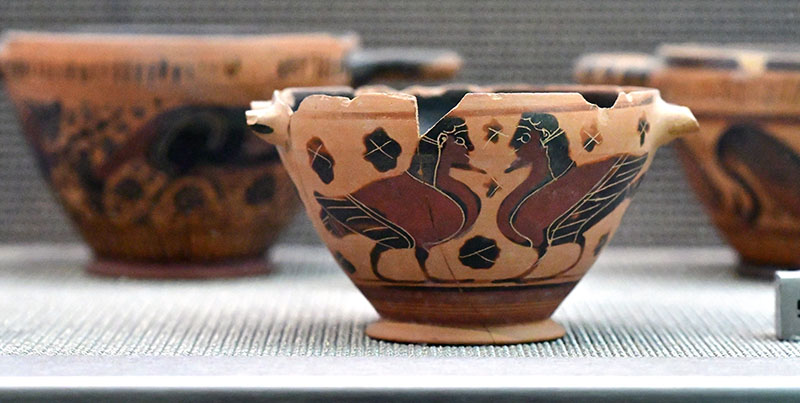
What does the Greek Sphinx mean? A lot of ancient Greek sphinxes are found as grave offerings in tombs, funerary monuments and sacred vessels in palaces. While the meaning of a Greek sphinx appearing on an ancient vase can probably vary some, most of the monuments seem to be connected to the world of the dead. The demonic creature was supposed to be warding off the evil, being the guardian of tombs and sanctuaries placed as funerary monuments.
For example, the Spata Sphinx is one of the most beautiful, well-preserved Greek sphinxes seen in Athens today.
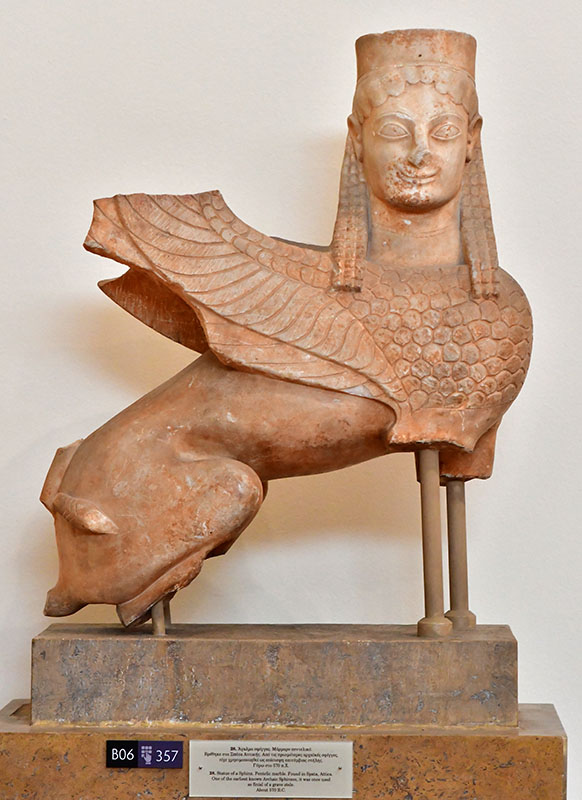
“A series of vases of the early and late Geometric period (9th-8th Century B.C.) came from a cemetery at the northern area of the airport. These were the first artefacts to inform us about the inhabitants of the land of that period. A network of dirt roads ran next to a cemetery, which crisscrossed fields, olive groves, vineyards, and linked the rural communities of the Attica. The family tombs of local aristocracy, who owned the best land in the area, dotted the landscape in the 6th century B.C. Powerful “Spata Sphinx,” now in the National Archaeological Museum in Athens, belonged to one of such luxury funerary monuments. A replica of this sphinx is exhibited at the airport’s museum.”
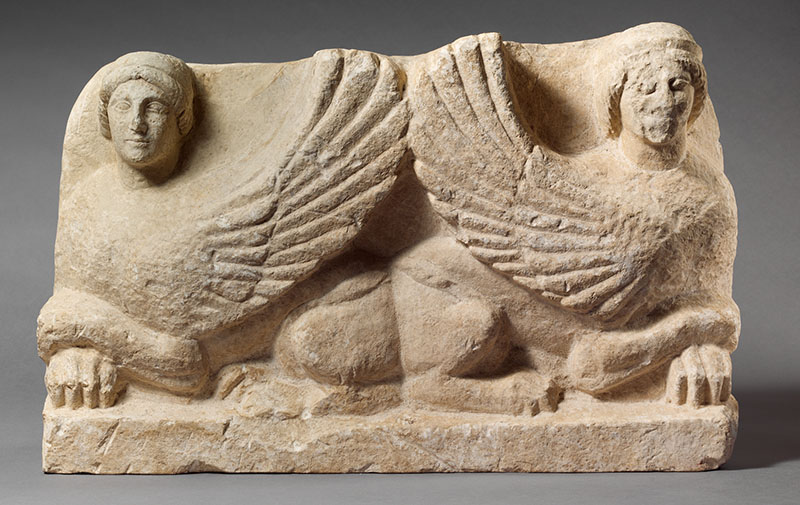
http://www.metmuseum.org/art/collection/search/242406
The Greeks placed the statues of a Sphinx as finial of a grave stele or as luxury grave monuments to be the guardians of the dead, similar to how sphinxes were viewed in Egypt. The Greek sphinx was also associated with riddles and challenges, as seen in the myth of Oedipus. The demonic statues were also decorative elements in small vases and perfume boxes.
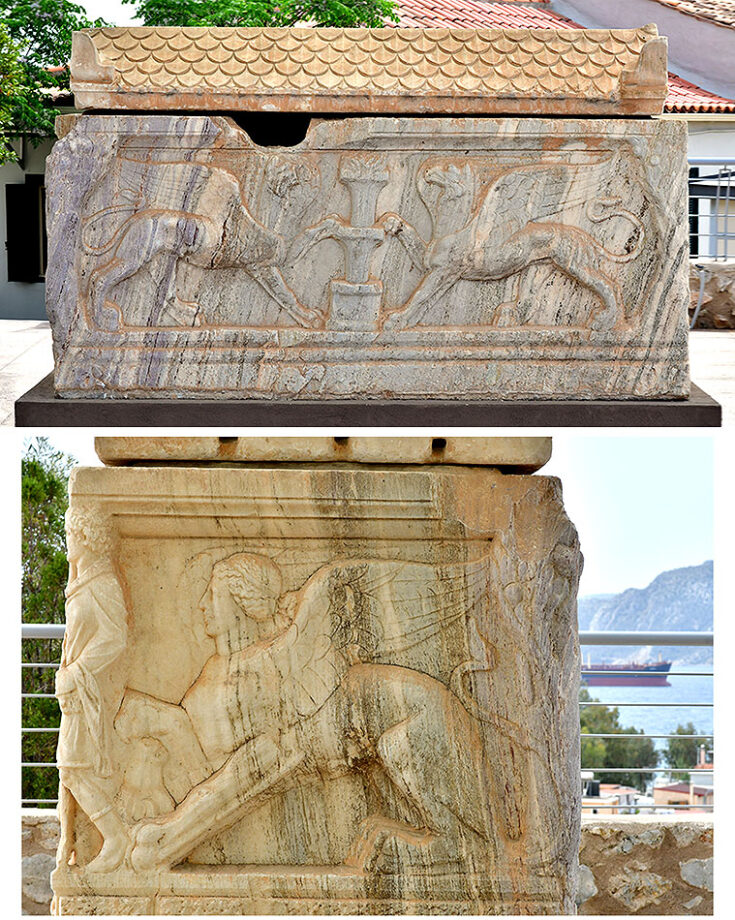
Ancient Greek Vessels showing the statue of a Sphinx:
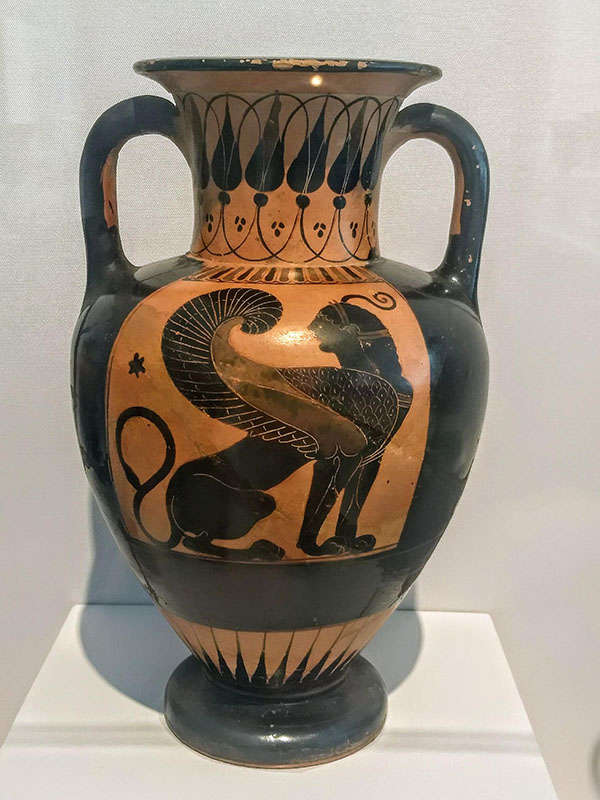
This elegant, large sphinx is painted in the shape and “Chalcidian” painting style of black-figure vases. The name of this style comes from the Greek town of Chalcis but thought by many scholars to have been produced in South Italy.
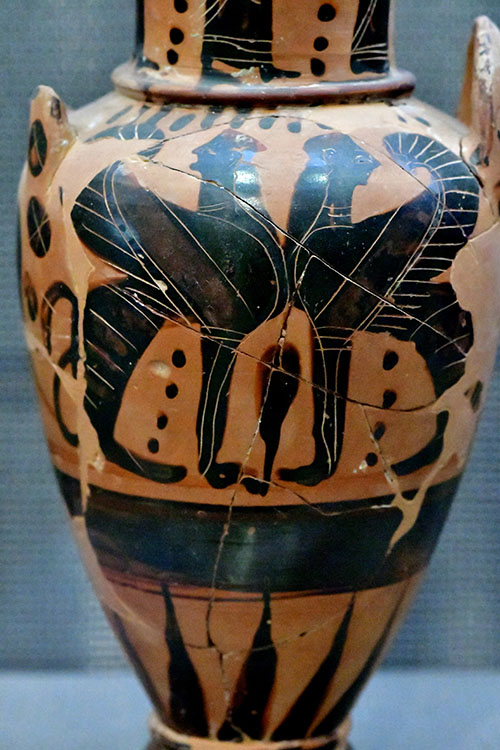
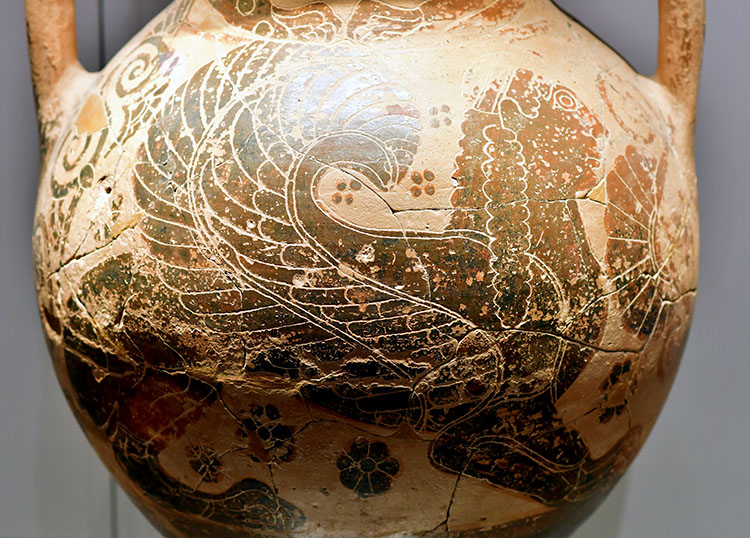
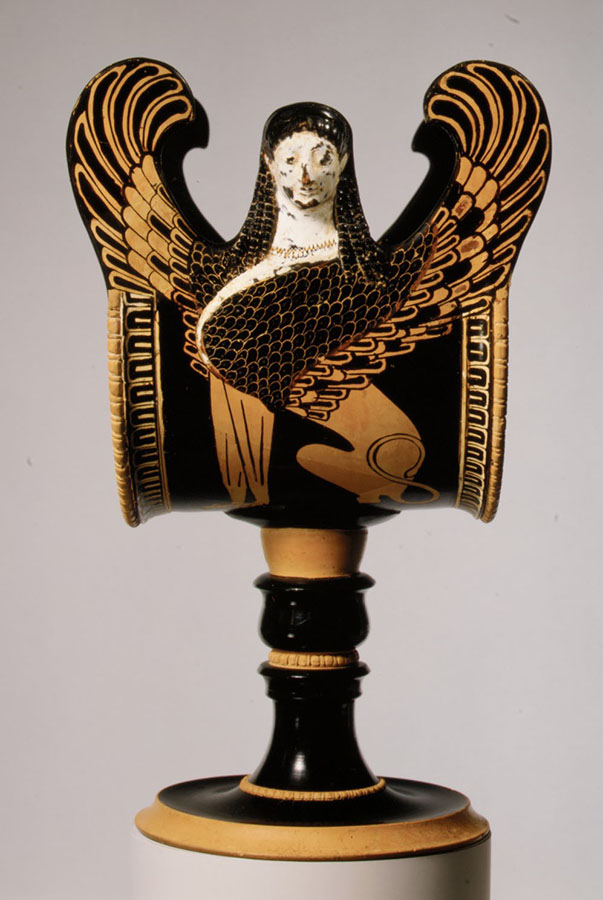
A lot of Attic pottery was manufactured and exported to Etruria. “Indigenous Etruscan shapes were reinterpreted in Athenian workshops; the Hellenized variants then sold to Etruscan patrons in the west and often buried in their tombs. The Etruscan prototypes generally exist in the sturdy black ware called bucchero. This pair of stands represents the phenomenon of adaptation with a shape unique in Attic vase-painting. They probably held floral or vegetal offerings.” https://www.metmuseum.org/art/collection/search/255195
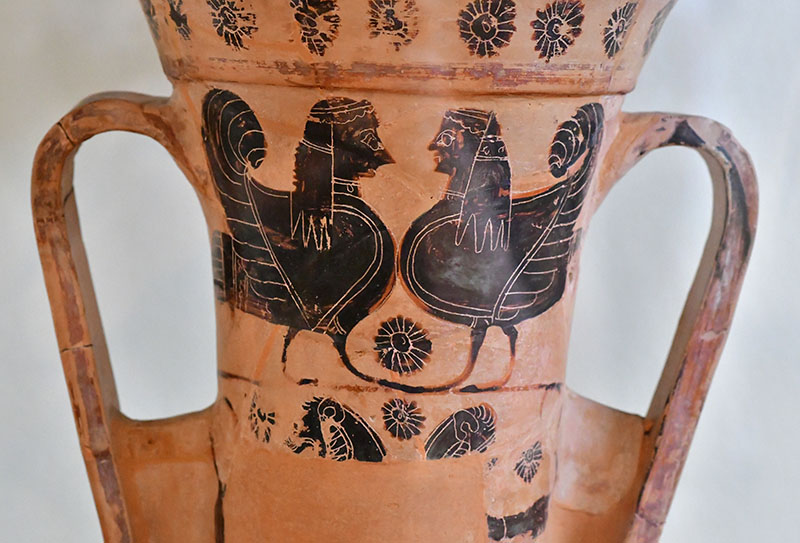
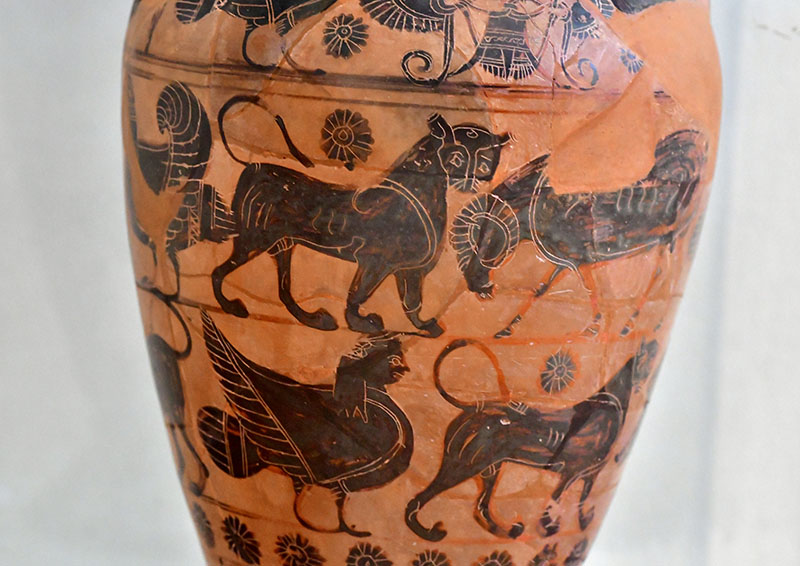
Similar designs on a pottery can be seen at the Metropolitan Museum of Art.
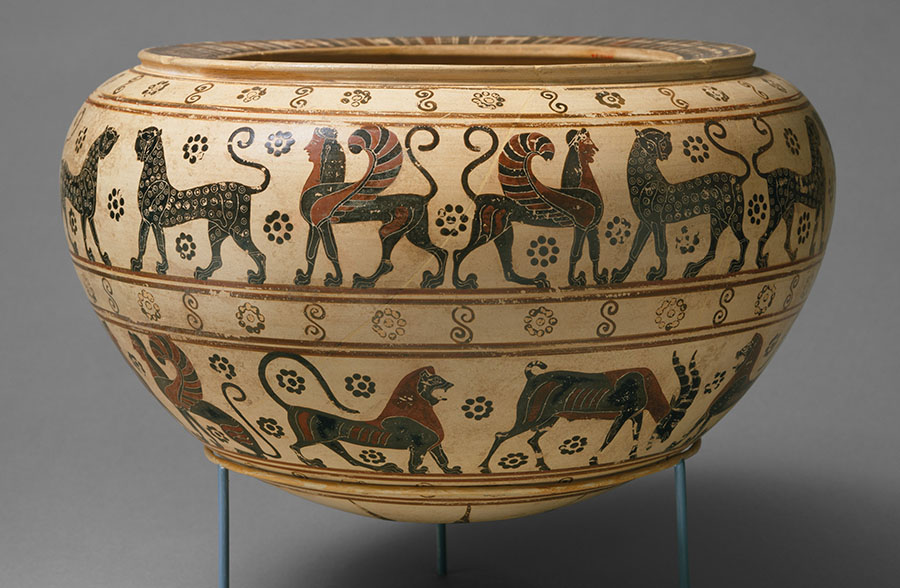
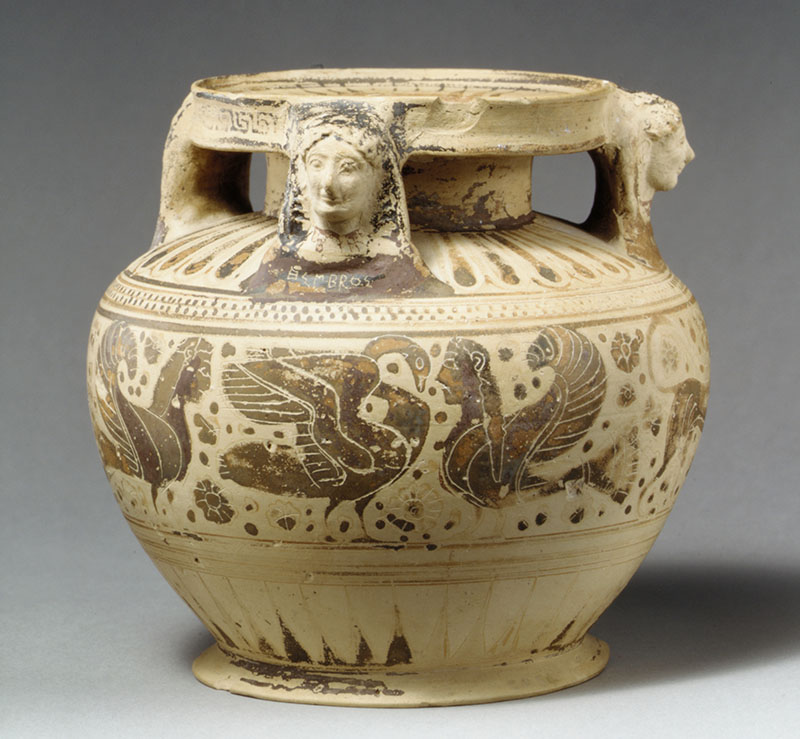
Color
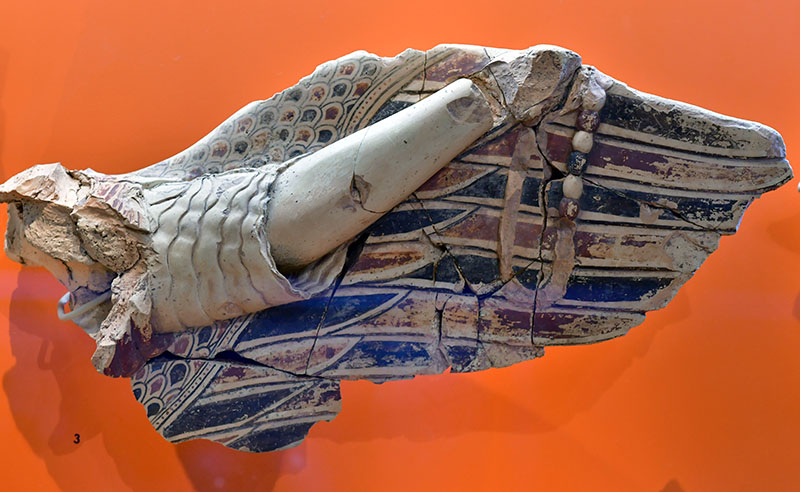
Color: “Polychromy” means “many colors” in Greek. Artists painted the statues of the sphinx figures and other sculptures using very bright colors including blue (azurite) and red. Traces of hues are left on the archaic limestone sphinxes dating from the early 6th century BCE. The sphinx displayed at the Met shows traces of cinnabar red, yellow ochre, carbon-based black, and blue pigments. According to the researchers at the Met, they identified 2 blue pigments – Egyptian blue (synthetic color developed in Egypt in the Late Bronze Age) and Azurite blue. Expensive Cinnabar Red was imported from Iberia (Spain). Red ochre was made of hematite.
All scientific findings were shared with Vinzenz Brinkmann and the Liebieghaus Polychromy Research Project. https://www.metmuseum.org/perspectives/articles/2022/8/new-research-greek-sphinx
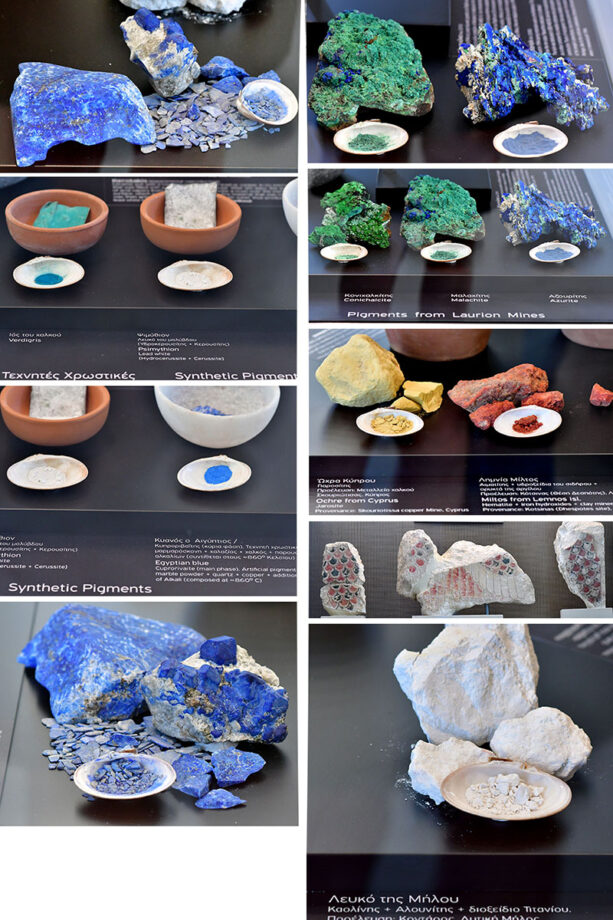
Other popular materials:
Ivory
Elephant ivory: this raw material and the Hippopotamus ivory (also in use during the Mycenean era) came from Near East & Egypt. Elephant ivory was reserved for large and expensive art pieces. In the palatial period (14th-13th centuries BC), artisans worked ivory in specialized workshops to make luxury objects, like the elaborate male or female figurines made for religious purposes, jewelry boxes, ivory handles for bronze mirrors, combs and musical instruments. They also produced massive amounts of ivory plaques-inlays in luxury furniture (beds, chairs, footstools) and even the chariot parts. Groups of plaques were in the shape of bull heads, figure-of-eight shields, columns, lilies or ivy leaves. According to the Linear B texts, ivory had inlays with gold, silver or kyanos (blue glass). Ivory objects or plaques depicted the human figures, griffins, sphinxes or animals in relief. Rosettes, half-rosettes or spirals had the decorative intent.
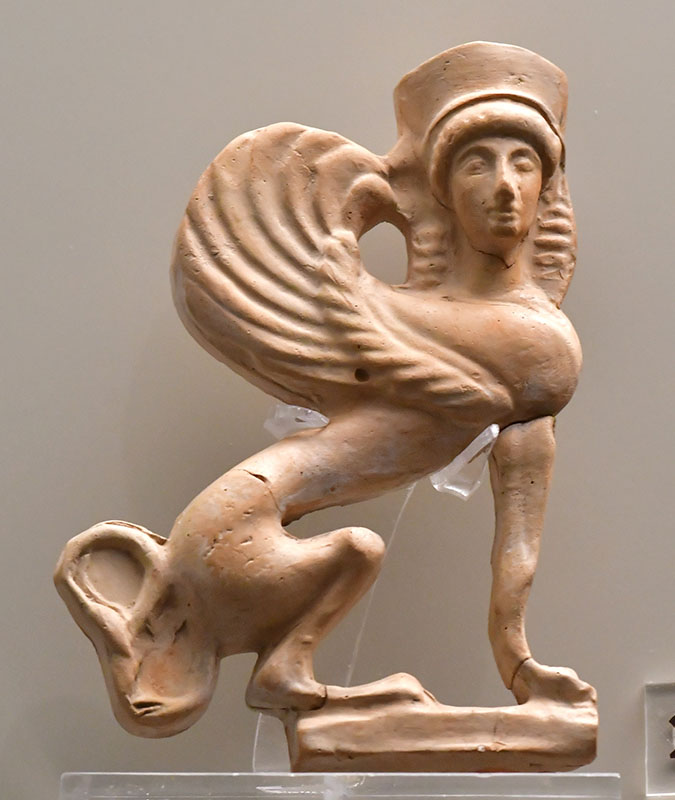
Miniature art in bronze and gold:
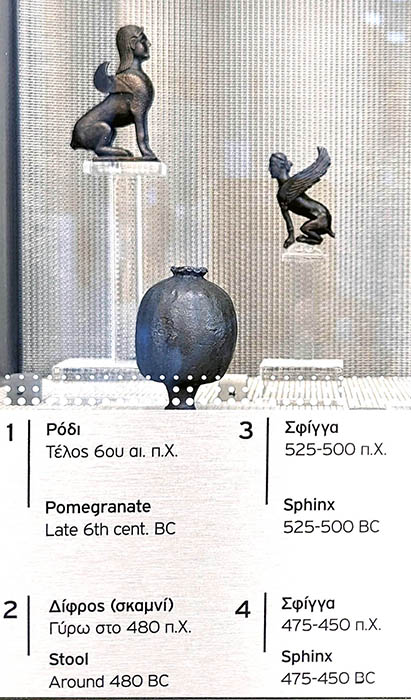
During the Neo palatial period, Minoan artists specialized in miniature art, producing works in gold and ivory plaques and mold-cast inlays in vitreous materials such as faience and glass paste. Their artistic motifs included images of nature and sacred symbols (like the double axe and the seated ivory child from Palaikastro). The arms of a figurines have traces of the veins showing artistic precision captured in miniature art.
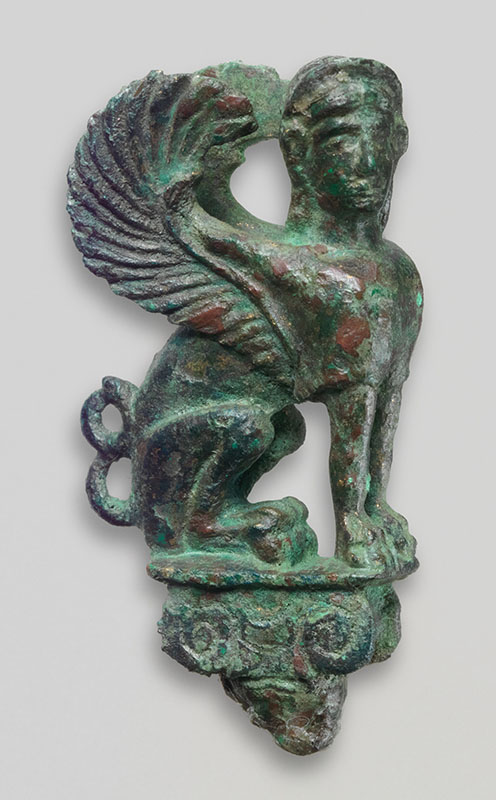
http://www.metmuseum.org/art/collection/search/256231
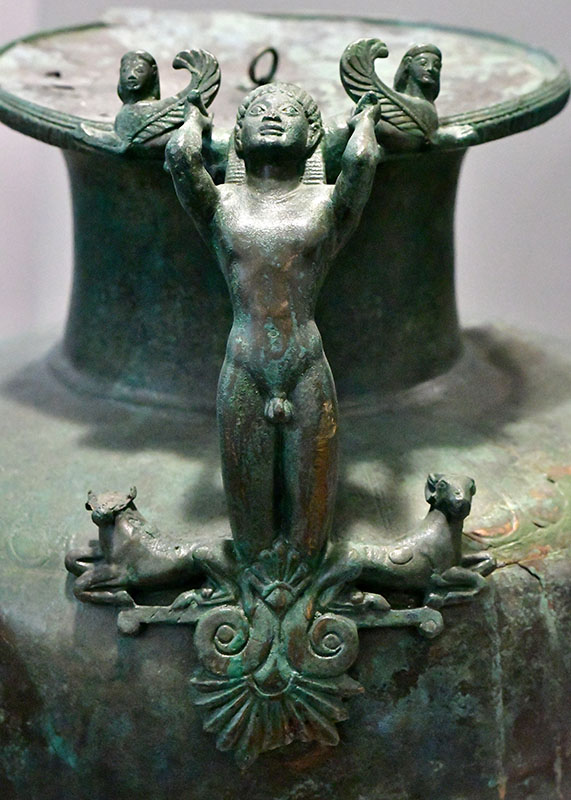
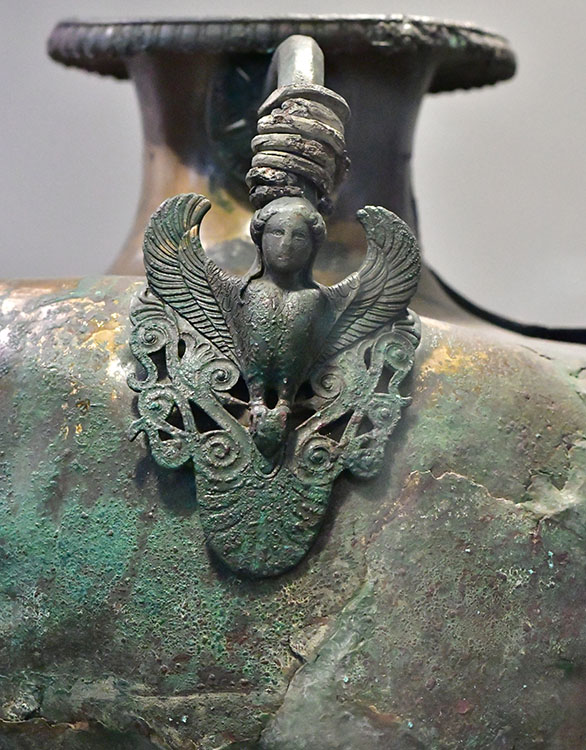
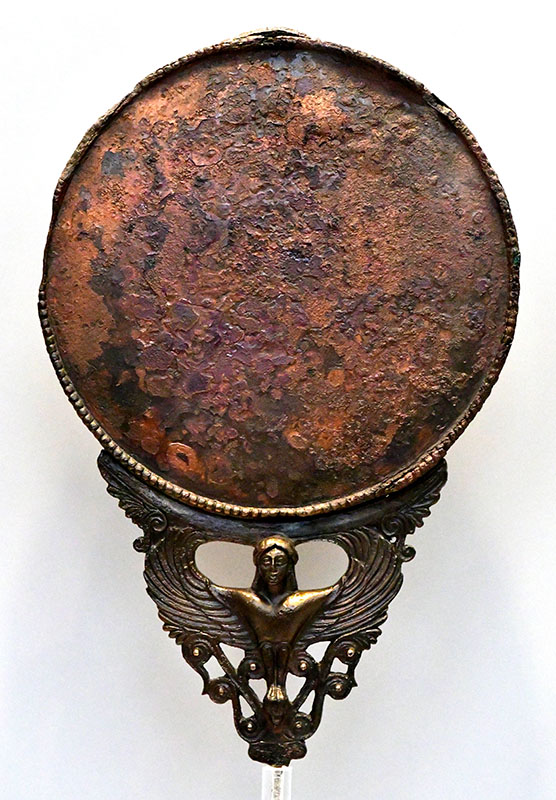
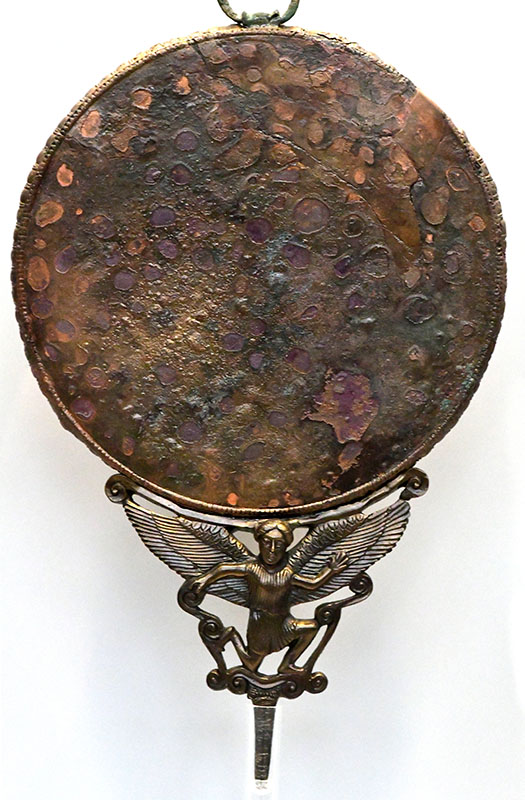
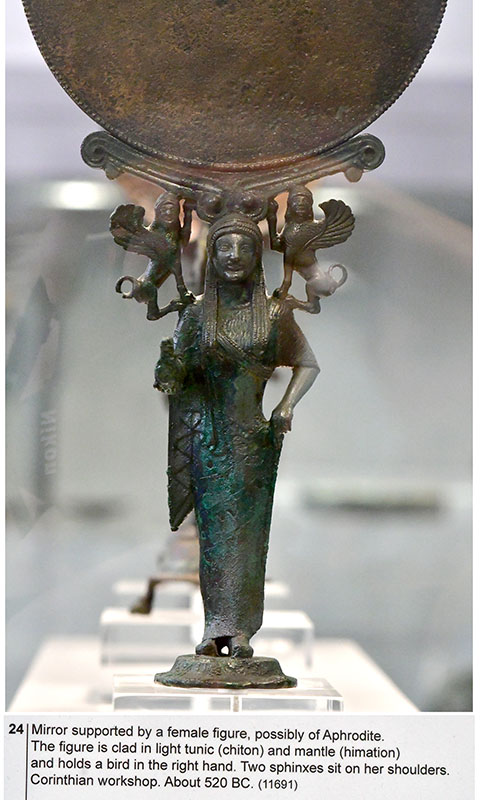
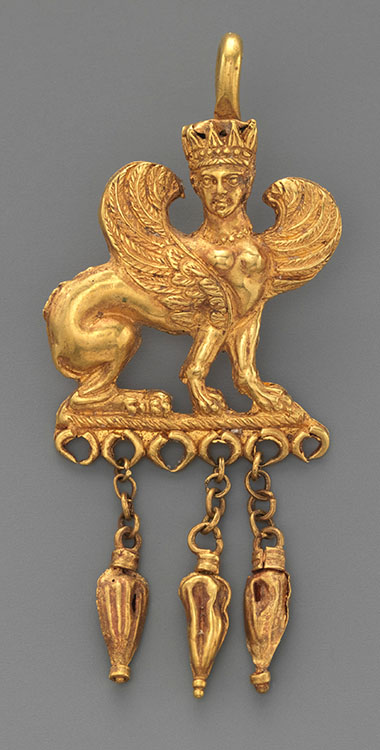
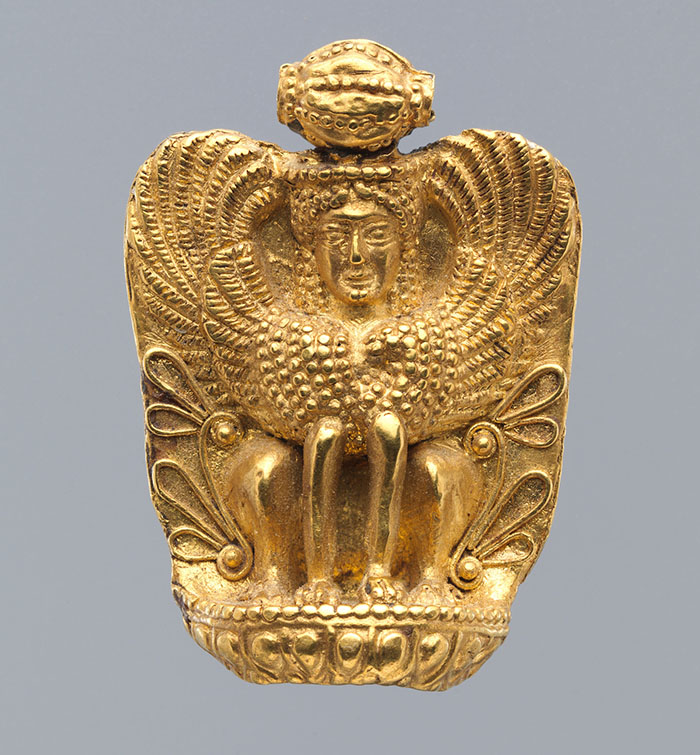
Oedipus and the Sphinx Mythology:
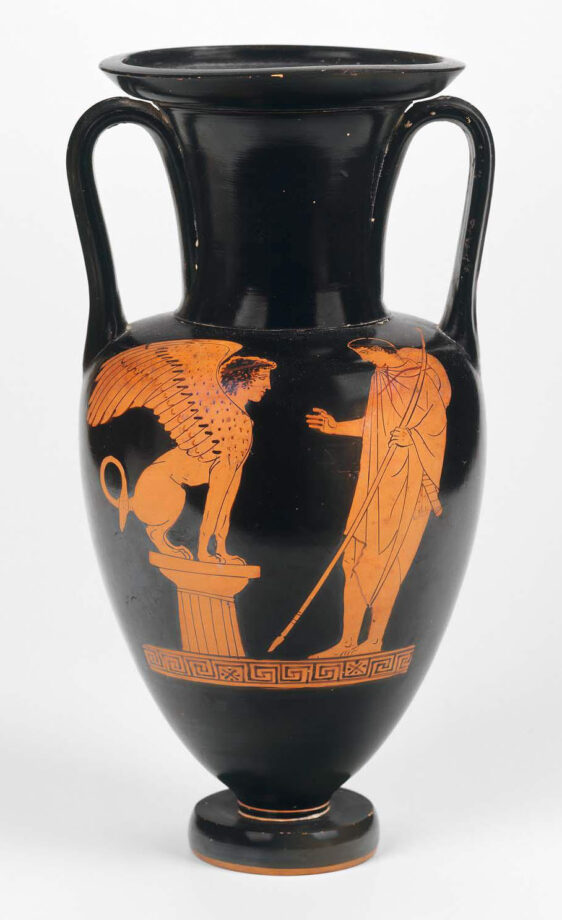
Embodying danger, destruction, and riddles, the most famous Greek sphinx is the one guarding Thebes in the story of Oedipus. This sphinx presented a deadly riddle to travelers, devouring those who couldn't answer it. No one could until the day Oedipus showed up. The riddle: "What is that which has one voice and yet becomes four-footed, two-footed, and three-footed?" Oedipus gives the answer that it's a man. He's four-footed as a baby. He walks on two feet as an adult and gets the third foot- a cane when he gets old.
Oedipus, king of Thebes, is a classic Greek tragedy of fate and free will.
- A Doomed Prophecy: King Laius and Queen Jocasta of Thebes learn from an oracle that their son will kill Laius and marry Jocasta. Horrified, they try to prevent this by piercing the infant’s ankles (hence the name “Oedipus,” meaning “swollen foot”) and abandoning him on a mountain.
- Twist of Fate: A shepherd finds the baby and takes him to the king and queen of Corinth, who raise him as their own.
- Fleeing Fate: Years later, Oedipus consults an oracle and receives the same chilling prophecy – he will kill his father and marry his mother. Believing his Corinthian parents to be his true ones, he flees Corinth to escape this fate.
- Unknowingly Fulfilling the Prophecy: On his journey, Oedipus gets into an argument with an older man (Laius) at a crossroads and unknowingly kills him. He then arrives at Thebes, where the city is plagued by the Sphinx, a creature who devours travelers who cannot answer her riddle. Oedipus solves the riddle, defeating the Sphinx.
- Reward and Unwitting Marriage: As a reward, Oedipus is declared the new king and marries the widowed queen – Jocasta, his biological mother, thus unknowingly committing the sin of incest. They have children together.
- Unraveling the Truth: A plague falls upon Thebes. Seeking the cause, Oedipus uncovers the truth of his past through a series of revelations, including a blind prophet and a shepherd.
- Tragic Consequences: Realizing the horror of his actions, Jocasta takes her own life and Oedipus, in despair, blinds himself. He is ultimately exiled from Thebes, condemned to wander with his daughters as his guides.
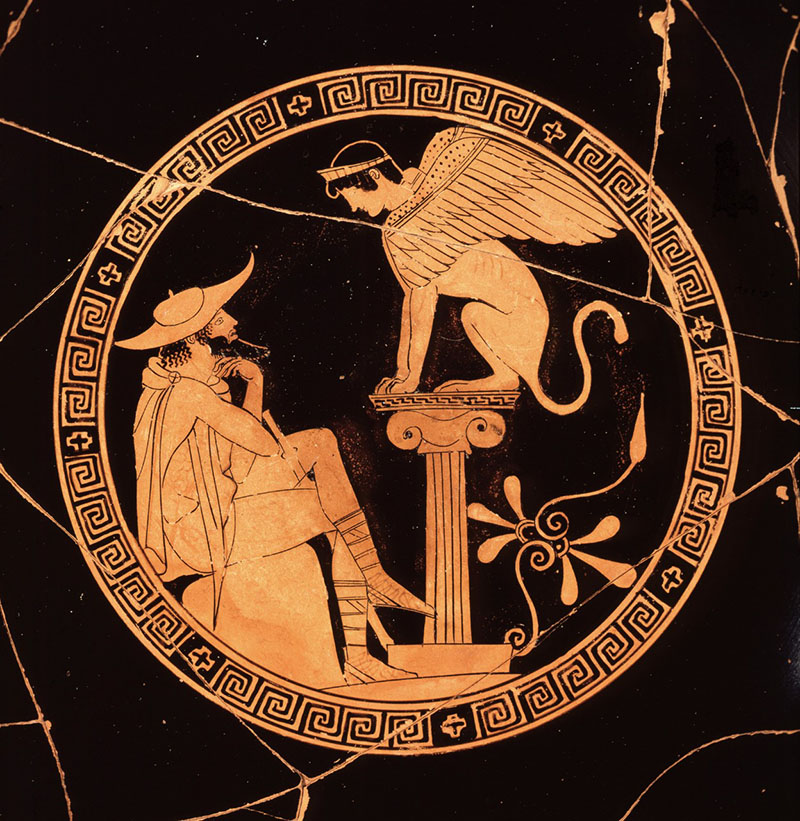
The tragic end of Oedipus, when the truth was revealed, served as the ultimate lesson in Delphic theology. It means that all humans should live a life of virtue, knowing that their fate has been predetermined by the gods. This is something that even Socrates, the wisest of men according to Pythian Apollo, admitted in Plato’s Apology, just before meeting his own end.
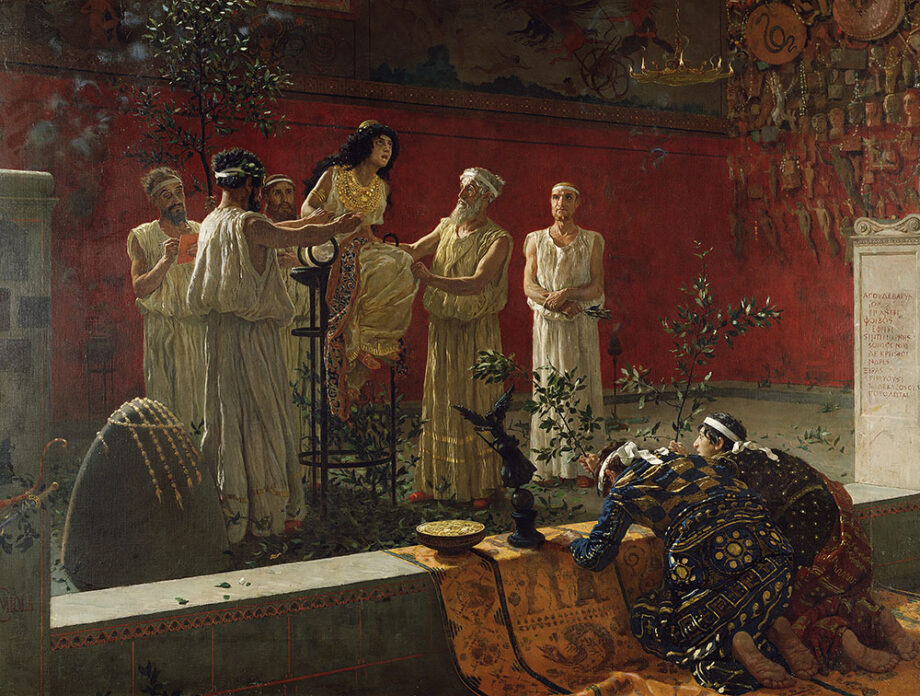
The story explores themes of fate versus free will, the power of knowledge and self-discovery, and the devastating consequences of defying the gods’ will. The sphinx mythology remained a popular motif in Greek art and literature for centuries and was revived in the 19th-century European art. The examples of which I’m including below.
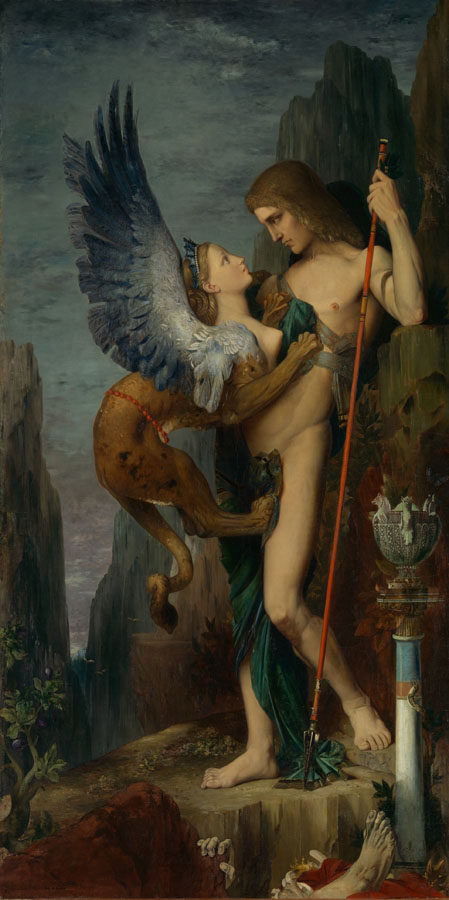
“What creature walks on four legs in the morning, two legs at noon, and three legs in the evening?” (The solution is the human, who crawls as a baby, strides upright in maturity, and uses a cane in old age.)
Moreau exhibited this painting at the Paris Salon of 1864. Despite the emergence of new painting ideas and style in art at that time, the artist focused on painting surreal, mythological, and imaginary stories. His mystical art inspired many artists, including Odilon Redon and Oscar Wilde.
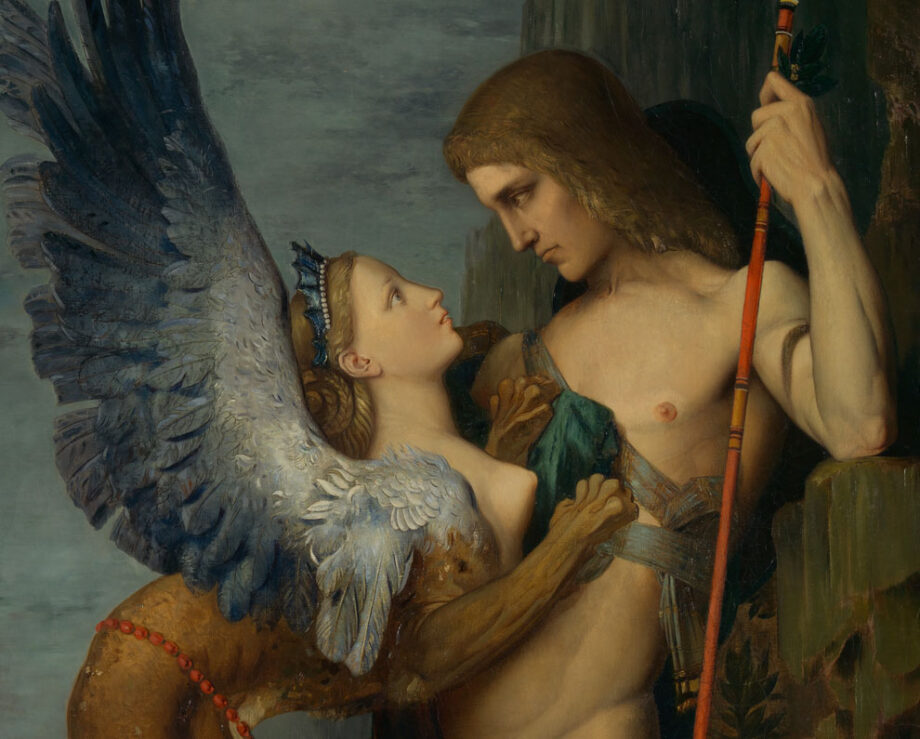
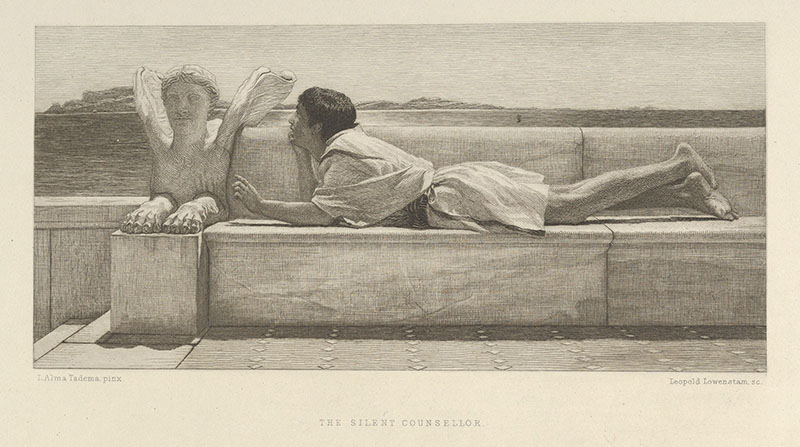
The Silent Councillor from the Portfolio, engraving done after painting by Tadema http://www.metmuseum.org/art/collection/search/668073
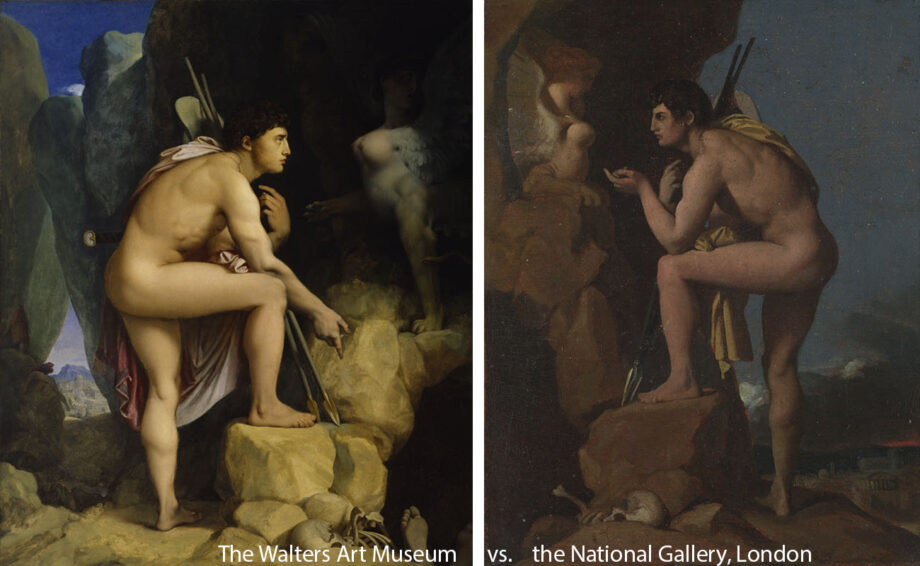
Ingres painted the story of Oedipus several times refining composition and even reversing the figures in a mirror-like image. One of the paintings is in The National Gallery, London and a reversed one is in The Walters Art Museum. Can you see the difference? 🙂 The London one looks like a developed sketch but not a finished painting. There’s also another (finished) painting on view in the Louvre dated to 1808.
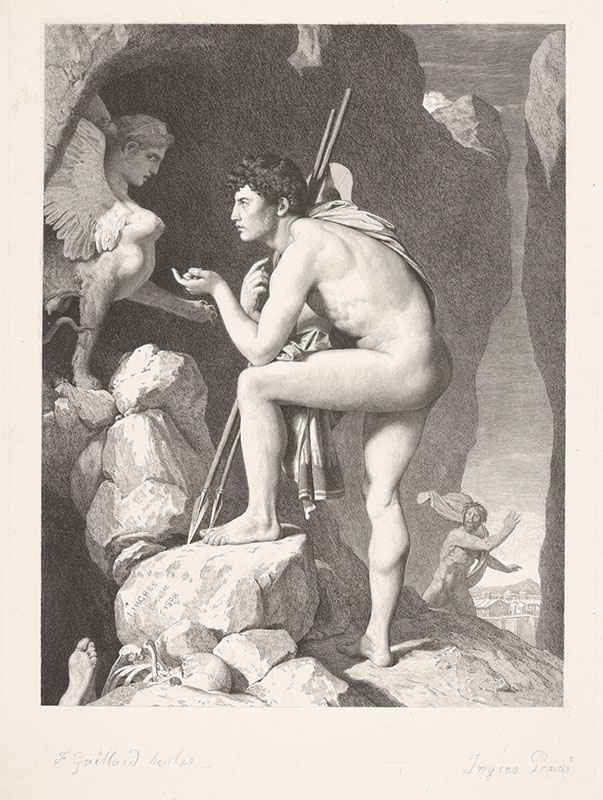
This black-and-white image is an engraving – a form of printmaking that allowed to make hand-pulled copies of art for mass distribution. Printmakers usually made engravings of famous paintings thus giving them a much wider reach.
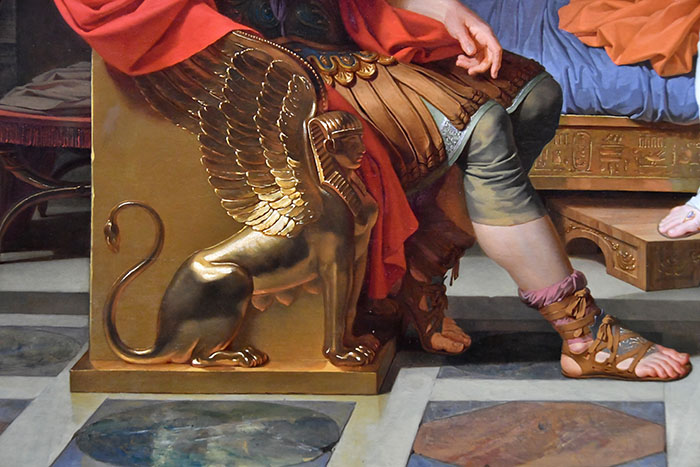
Conclusion
When I decide to write an article about any subject, it quickly spirals into a rabbit hole of endless information. While I start with my basic knowledge on the subject, it becomes an extensive research based on my travel photography, books and descriptions at the art museums. I hope you enjoyed reading about the origins and artistic development of this enigmatic sphinx figure that will inspire you to both create and share this article with your friends!
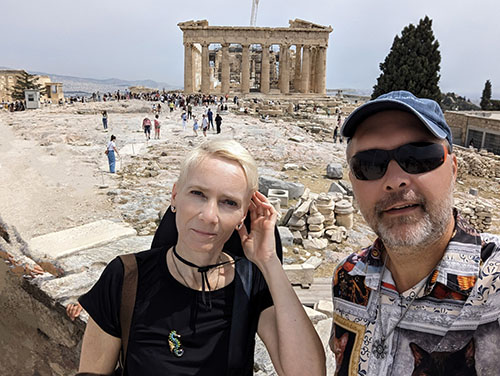
References: While most of my writing is based on my trip to Greece where I took pictures of descriptions and art in the archeological museums and sites in Athens, Heraklion, Mycenae, Delphi, etc, I also found beautiful images and descriptions on the Met website that I included throughout the article. Main links are below:
https://www.metmuseum.org/perspectives/articles/2022/8/archaic-greek-sphinx
https://www.metmuseum.org/art/collection/search/251951
https://www.metmuseum.org/exhibitions/chroma

